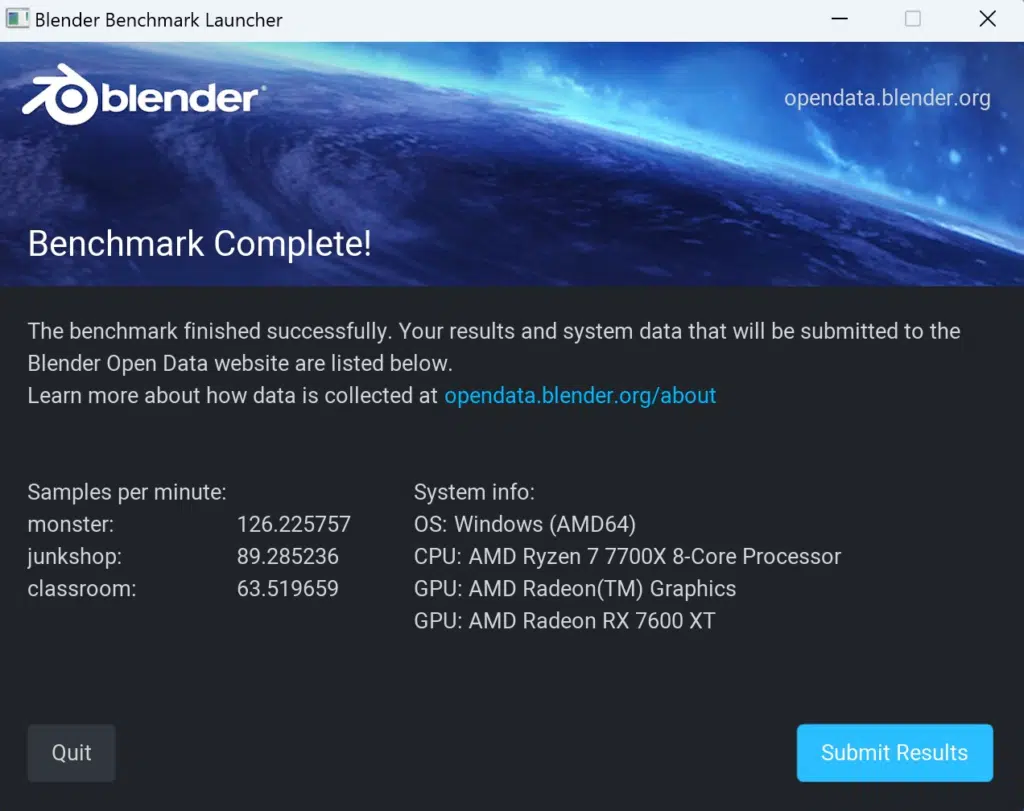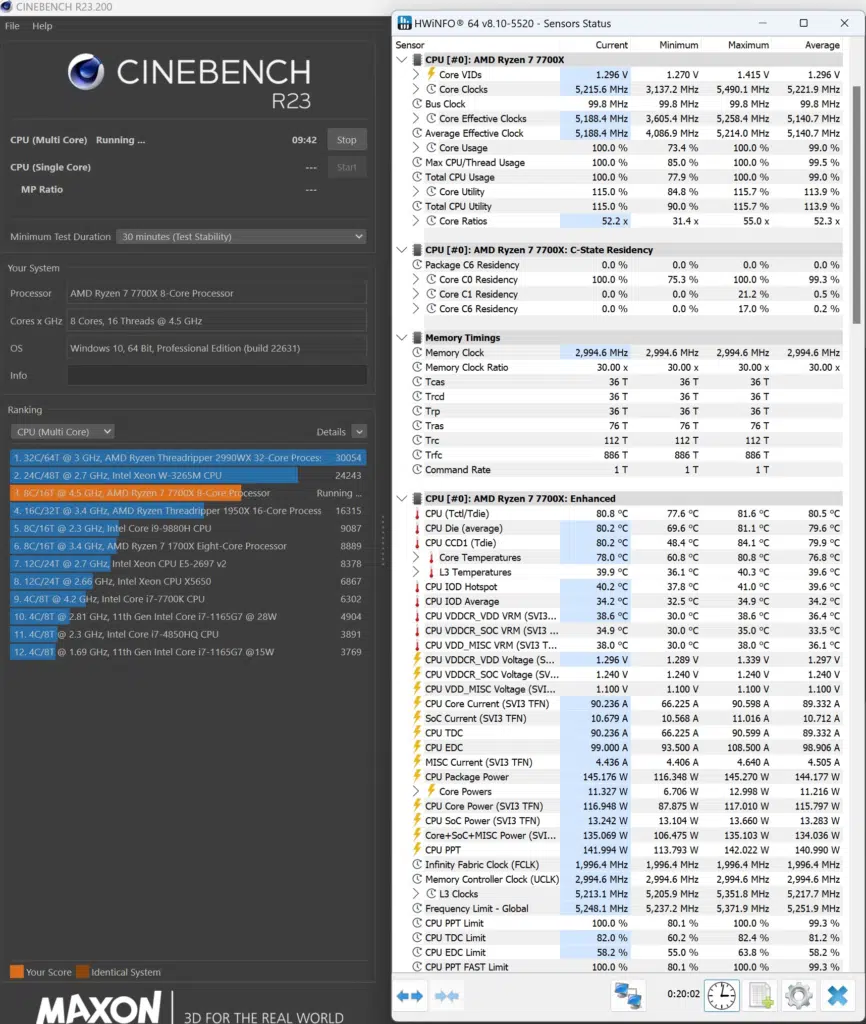
Introduction
In this review, we evaluate the brand-new ASRock X870 Steel Legend WiFi motherboard. As the name implies, the main attraction is the release (on September 30, 2024) of the X870 and X870E chipset for AMD AM5 socket processors. Our motherboard sits in the second tier of the ASRock product stack for this release, right behind the Nova and Taichi, but stands out by its unique styling, and is based on X870.
ASRock is releasing four X870-based motherboards at this time, the X870 Riptide, two X870 Pro RS, and our X870 Steel Legend sitting at the top of the X870 product stack. Honestly, there isn’t a lot of difference in these four boards, they are either creator-based or gaming-themed, having the same basic layout and features. Of course, the top tier has the X870E models: the X870E Taichi and Taichi Lite and the X870 Nova. ASRock is a well-known manufacturer of computer components and produces a wide range of motherboards to include gaming, creator, and general purpose.
The ASRock X870 Steel Legend WiFi ushers in several new additions to the AM5 socket motherboards; namely a dedicated Gen5 M.2 SSD slot, Gen5 x 16 PCIe slot, and USB4 functionality. As noted, our motherboard, as a Steel Legend is white with black and silver accents. Although this motherboard is a bit minimalistic, it is full-featured and will appeal to buyers in almost any segment. Of course, as the box says, we also get WiFi 7. Additionally, the motherboard is an 8-layer high quality PCB design, and features ASRock-exclusive long-life capacitors. The retail price of this motherboard at the time of writing is $259.
If you aren’t familiar with the AMD X870 and X870E chipsets, these are new chipsets for AM5 motherboards announced back at Computex 2024. Though these new AM5 chipsets were announced alongside AMD Zen 5 CPUs (Ryzen 9000 series), they are not required to run Zen 5 CPUs, and have no performance differences for Zen 5 CPUs, or Zen 4, compared to previous AMD X670 and X670E series chipsets.
Primarily, the addition of USB4 is added as a requirement, and the number of PCIe lanes changes around a bit to allow for features such as Gen5 M.2 connectors, and Gen5 PCIe expansion slots. This does give motherboard manufacturers the chance to feature new designs, updated components, and perhaps even better routing of lanes for higher DDR5 memory frequencies.
AMD has a great comparison chart here that shows the differences in PCIe assignments, and requirements. Suffice it to say, the AMD X870E chipset motherboards, like the ASRock X870E Taichi we are reviewing today, have the highest configuration of features and PCIe lanes.
Packaging and Contents

We received a full retail packaged box from ASRock. The motherboard was well protected. The board was placed in an antistatic bag and surrounded by cardboard elements to keep it stable. There wasn’t much included inside, however. We received the WiFi antennas, a package of 2 SATA cables, a thermal probe, 2 velcro straps, and a mystery plastic button of some sort. There was also a very general “Quick Installation Guide”.

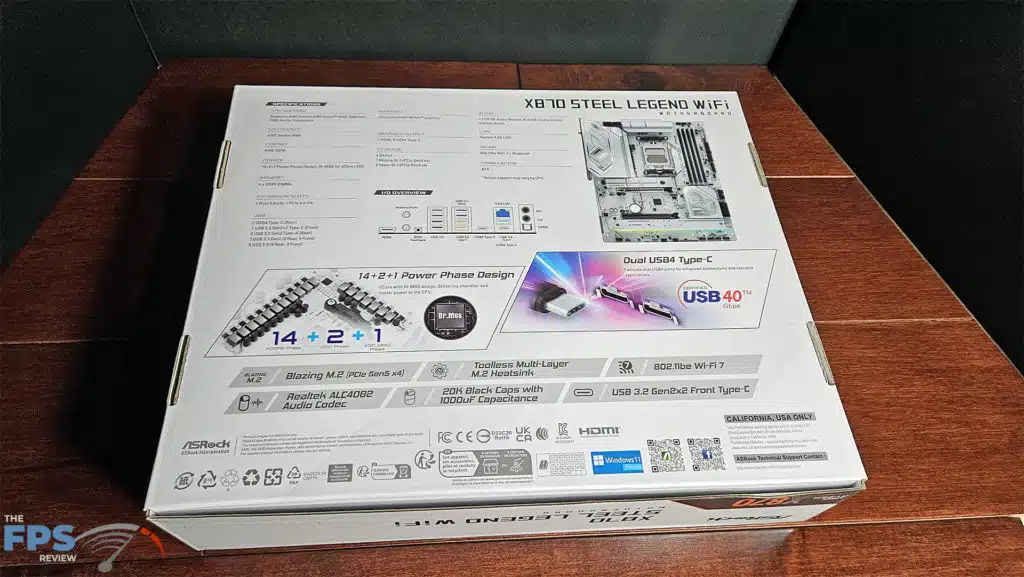

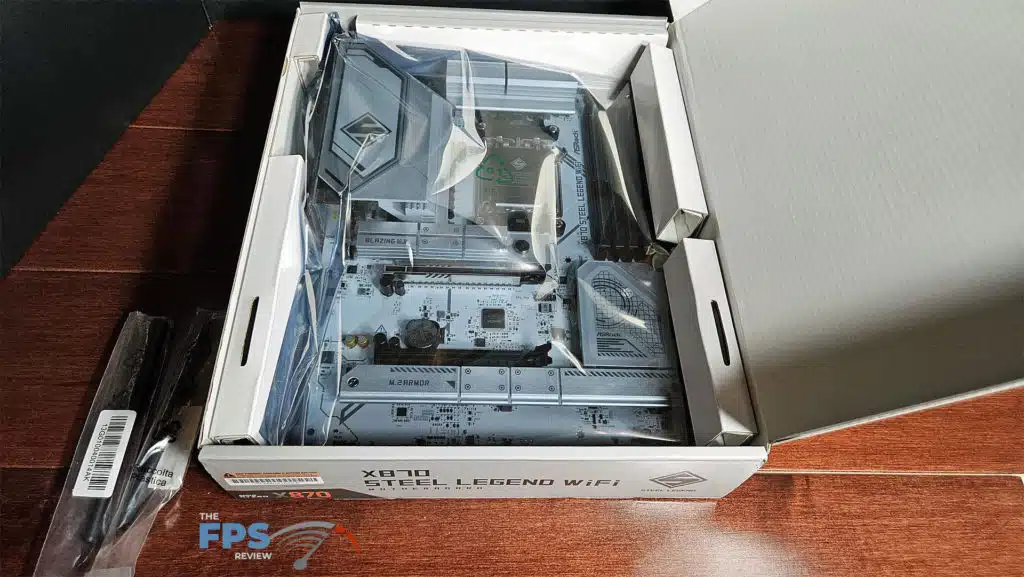
ASRock X870 Steel Legend WiFi Features
All in all, the Steel Legend series of motherboards has a very clean white and black appearance. The heatsinks vary from plain white to a silver metallic. The logos and lettering are discrete and appealing. The board is hefty when held and feels solid and well-made. There is no bend or give from the board when picked up or mounted on the bench. The heatsinks are well mounted and give an added weight to the board. The mounting on the underside is solid.
The price positioning of the ASRock X870 Steel Legend WiFi does leave it a bit spartan in features. There is only a set of debug LEDs in the upper right corner to help you troubleshoot, rather than numerical codes. On the other hand, the primary M.2 slot has a quick-release latch and thermal pads on the top and bottom sides.
The motherboard also has a wired ethernet 2.5Gb RealTek port (RTL8125) in addition to the latest WiFi7 from a MediaTek chip. Audio is supplied by a RealTek ALC 4087 capable of 7.1 surround. Nihimic software is also supported. Another new feature of the X870 chipset is USB4 which we will discuss a bit later. Also, we see limited RGB on the board, just underneath the M.2 #2 and #3 heatsink.
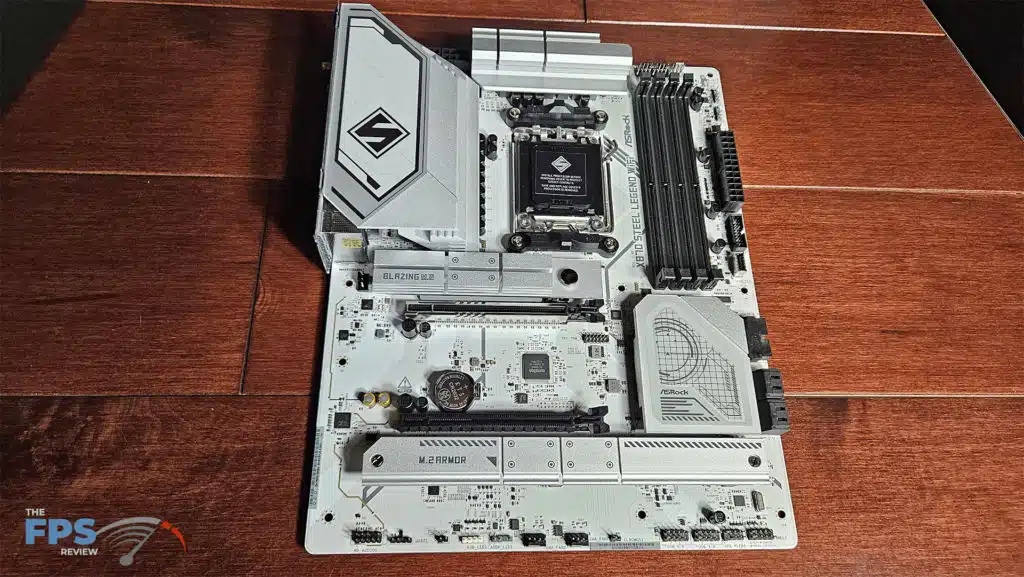
Power Delivery

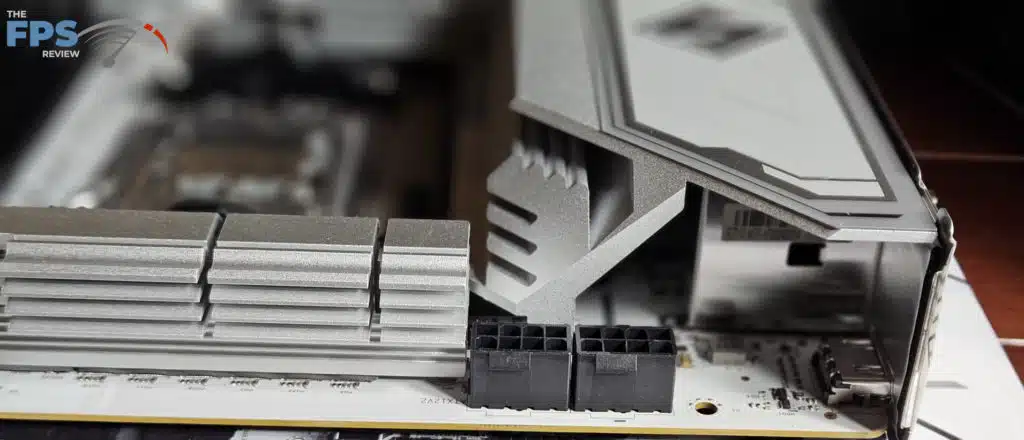
The ASRock X870 Steel Legend WiFi features 14+2+1 power phase, 80Amp total VRM, and Dr.MOS SPS protection for VCore+SOC. Specifically designed black Nichicon capacitors Featuring ASRock’s exclusive 1000uF capacitor with 20,000 hrs lifespan are also used for longevity and higher capacitance. As stated the heatsinks are solid and heavy, but not heapiped. Power is supplied by two 8-pin EPS connectors from the PSU. Interestingly, this is the same power outlay as the Steel Legend X670E motherboard.
Memory and Storage
The ASRock X870 Steel Legend WiFi has 4 DIMM slots and supports DDR5 memory up to 8000MT/s (overclocked). The maximum capacity of the DIMMs is 256GB. (boy….I can remember when that was a huge amount for a hard drive). The slots are spaced far enough from the CPU bracket to allow easy placement of our AIO cooler. We can not imagine a problem mounting almost any CPU cooler unless you purchase memory with an extraordinarily tall heat sink enclosure or RGB.
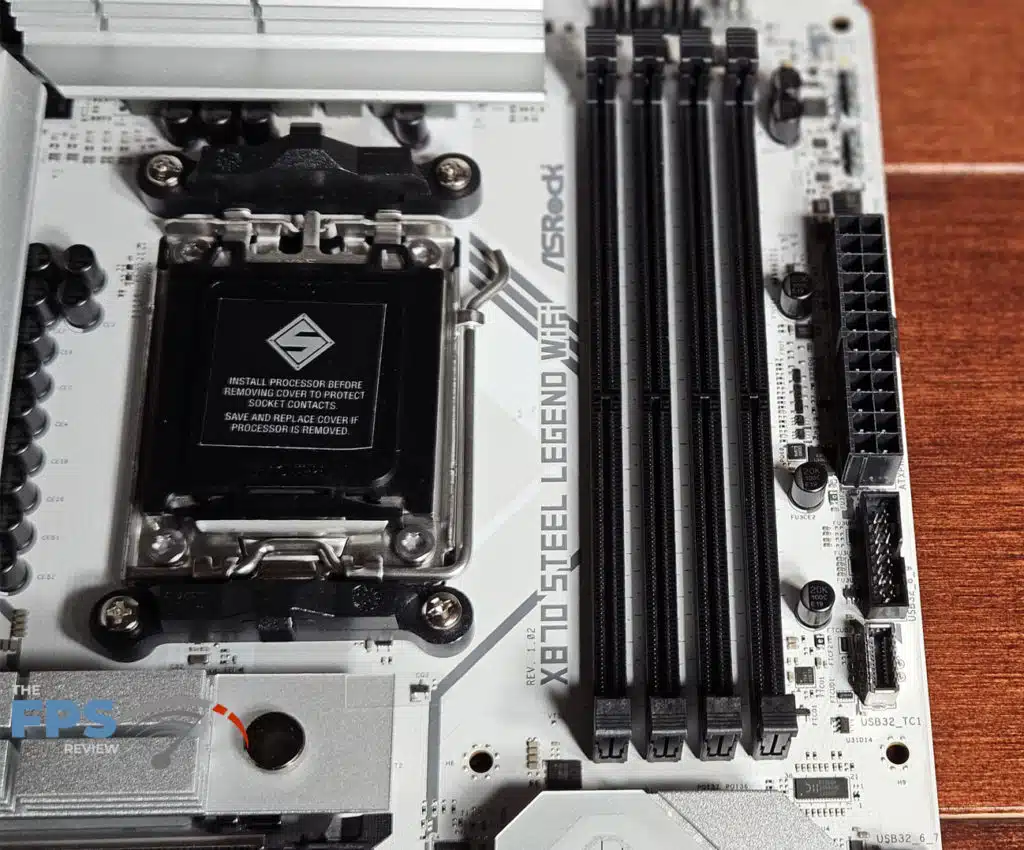
Storage slots on the ASRock X870 Steel Legend WiFi include one M.2 Gen5 slot and two M.2 Gen 4 slots. ASRocks refers to these as Blazing (Gen5) and Hyper (Gen4). The Gen 5 M.2 is located just above the primary PCIe slot and the two Gen4 slots are below the secondary PCIe slot. The primary M.2 has a generous-sized aluminum heat sink which is removed by a quick-release button. The button is slid towards the heatsink to open it. The second and third M.2 slots are underneath a slimmer aluminum heatsink which is released by standard Phillips head screws. All three slots have easy access, the primary can be accessed even with a GPU in place. All three slots have thermal pads, primary top, and bottom, the other two only the top.
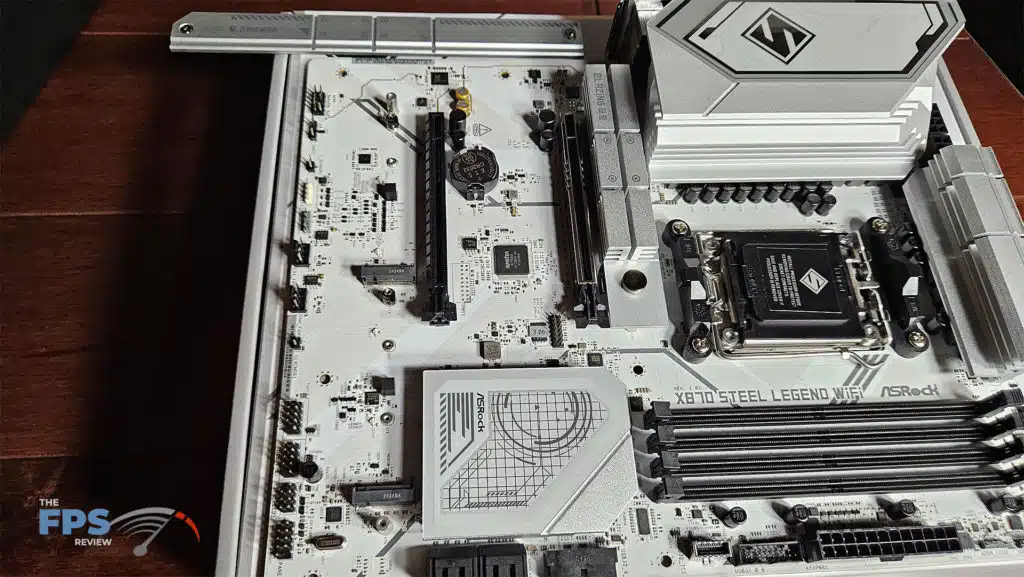
M.2 speeds are as follows: M.2_1 128Gb/s, M.2_2and3 64Gb/s. The primary slot is supplied by CPU and the other two are by the X870 chipset. An ASMedia ASM 1061 chip supplies four SATA 6 Gb/s ports which are located aside the chipset heatsink on the edge of the board at 90-degree angles.
Expansion
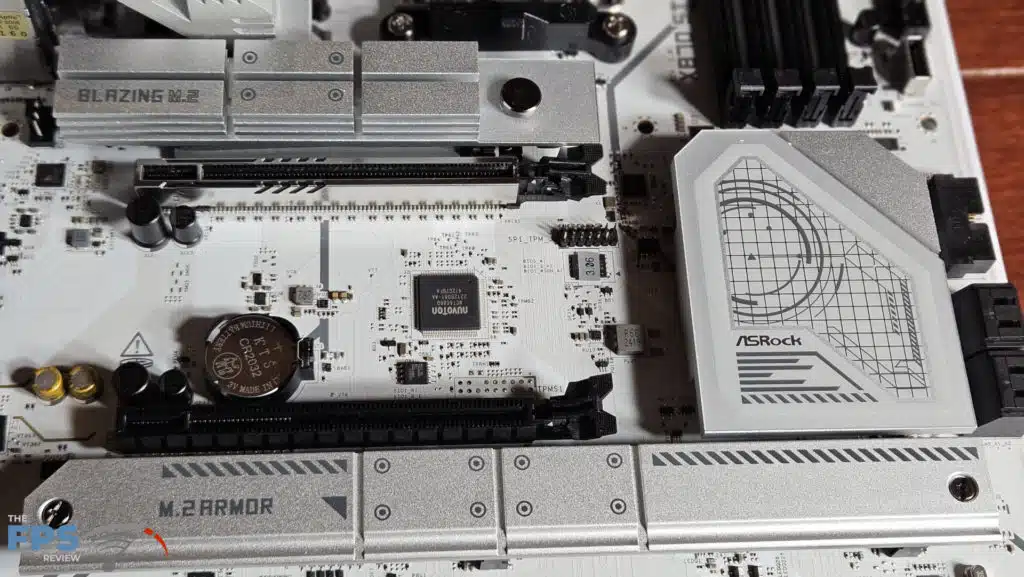
The ASRock X870 Steel Legend WiFi has two expansion slots. The primary slot is PCIe 5.0 x 16 and the secondary is PCIe 4.0 at x4. If the M.2_3 slot is occupied this secondary PCIe will be disabled. You can see that the primary PCIe slot is metal-reinforced. Neither of the PCIe slots has any sort of fancy release mechanism. With the ASRock Steel Legend RX 7600 XT graphics card installed in this motherboard, it was somewhat difficult to reach the latch to remove the graphics card.
I/O
The ASRock X870 Steel Legend WiFi rear I/O panel is of the style where the rear motherboard plate is preinstalled. The connections on the rear include HDMI port, two antenna ports, BIOS Flashback, 4 x USB 2.0, 2 x USB 3.2 Gen2 Type A (“Ultra Power”), 3 x USB 3.2 Gen 1 Type A (two are yellow, “Lightning Gaming Ports”) two USB4 Type C, RJ-45 Ethernet port, SPDIF, Line out and Microphone Input.
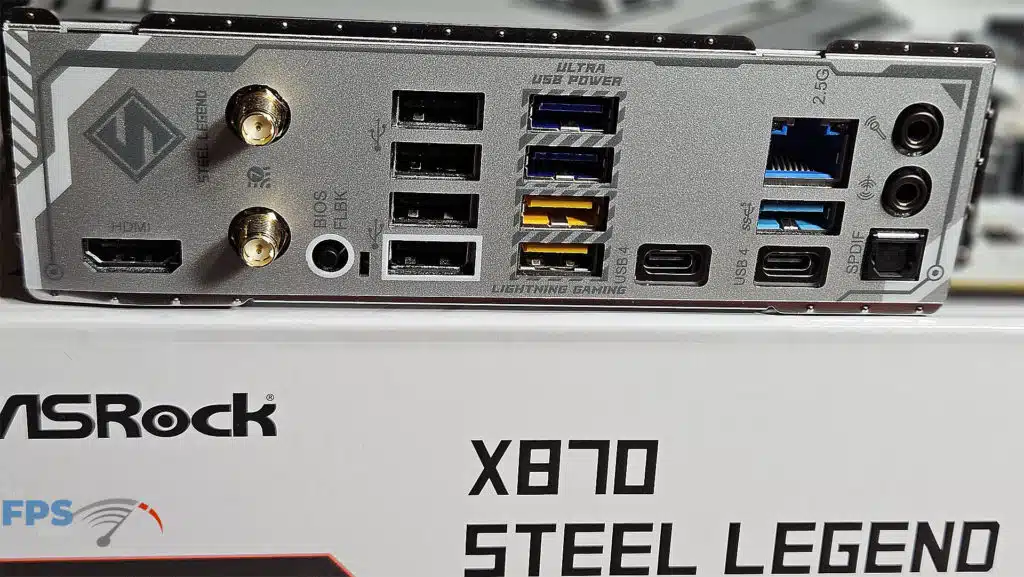
Additionally, there are a total of six 4-pin fan headers. At the top right, two CPUs and one AIO pump. At the bottom right two chassis fan headers, and a final header behind the I/O panel. Along the right side are two USB 3.2 Gen1 front panel headers and a single USB 3.2 Type C header. At the bottom of the motherboard are the front panel power button connector, two USB 2.0 headers, and the front panel audio header.
For the RGB we have one 12V LED (4-pin) header and three Addressable LED (3-pin) headers if the onboard lighting doesn’t do it for you. RGB controls are supplied by ASRock Polychrome SYNC software. As was stated earlier, audio for this board is supplied by RealTek ALC 4082 codec. This can support up to 7.1 channel sound and also Nihimic sound software.
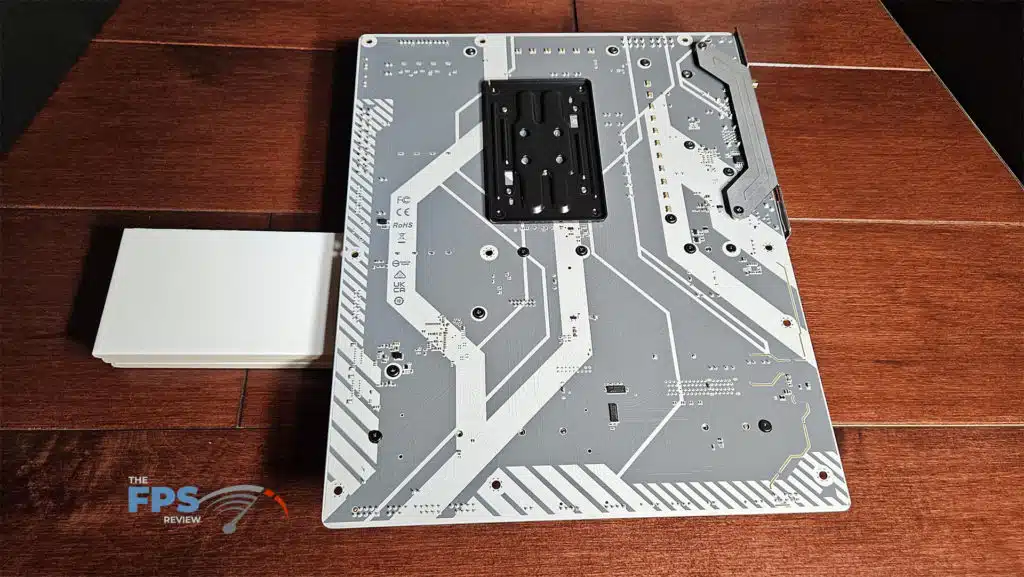

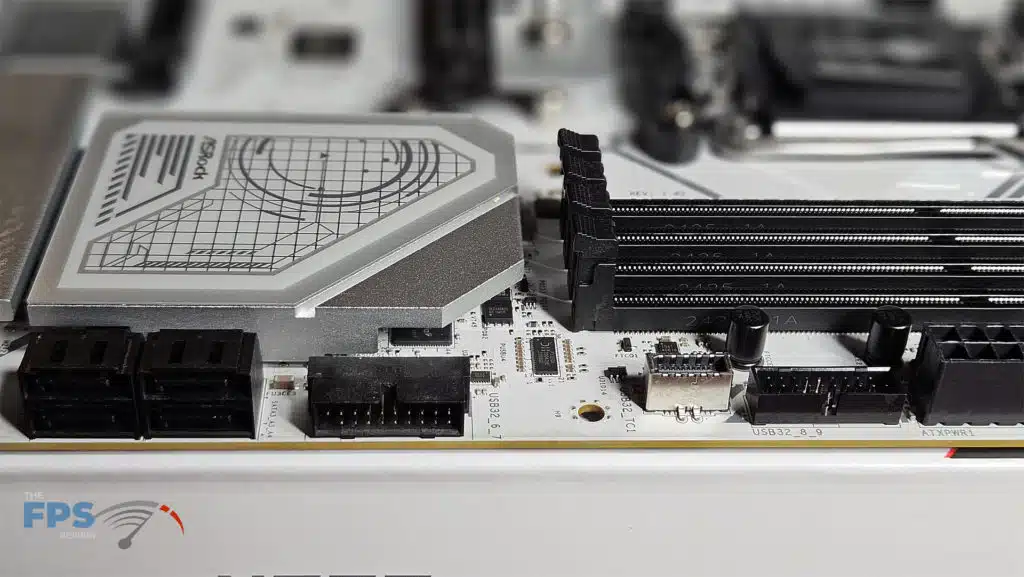
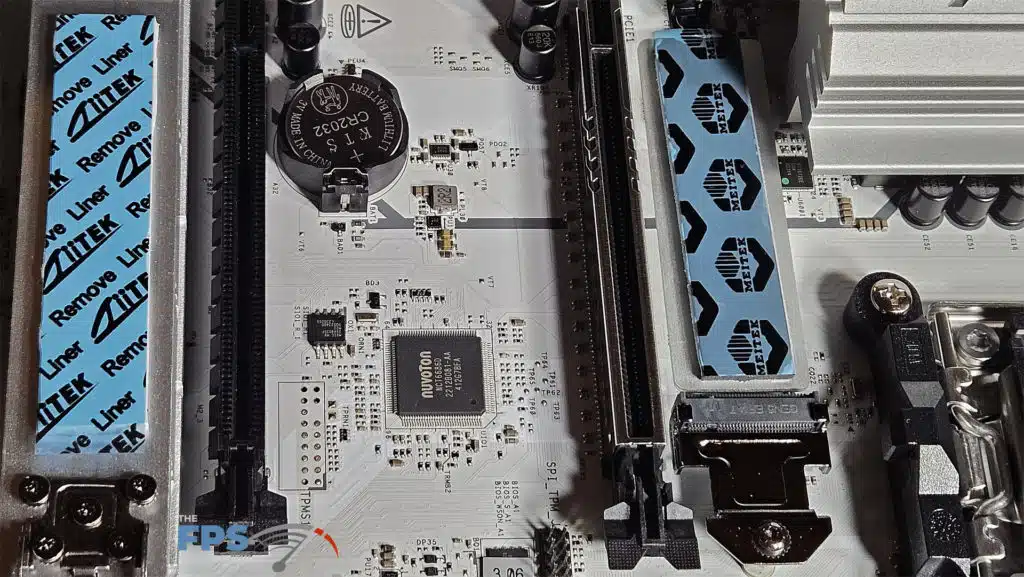
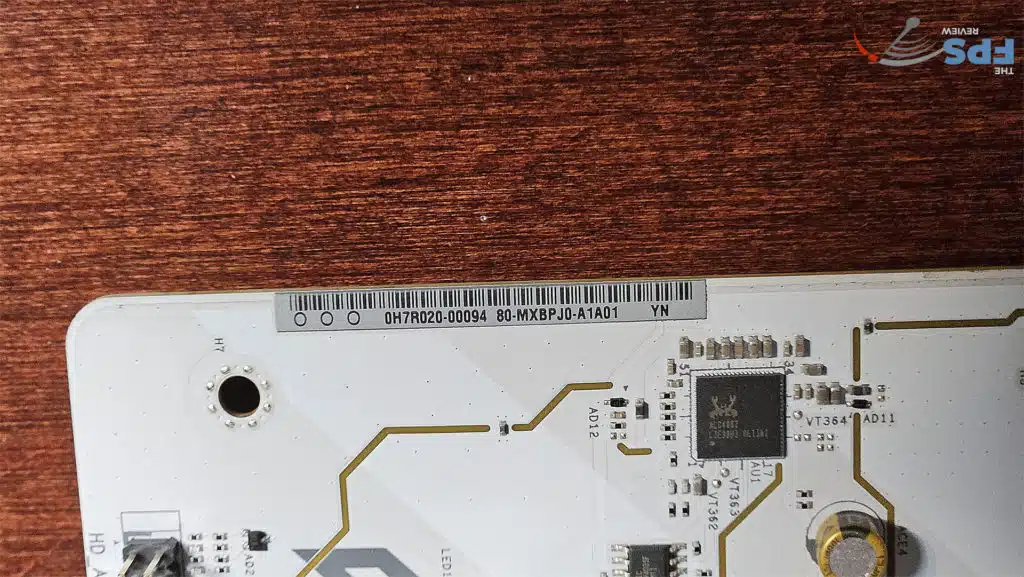
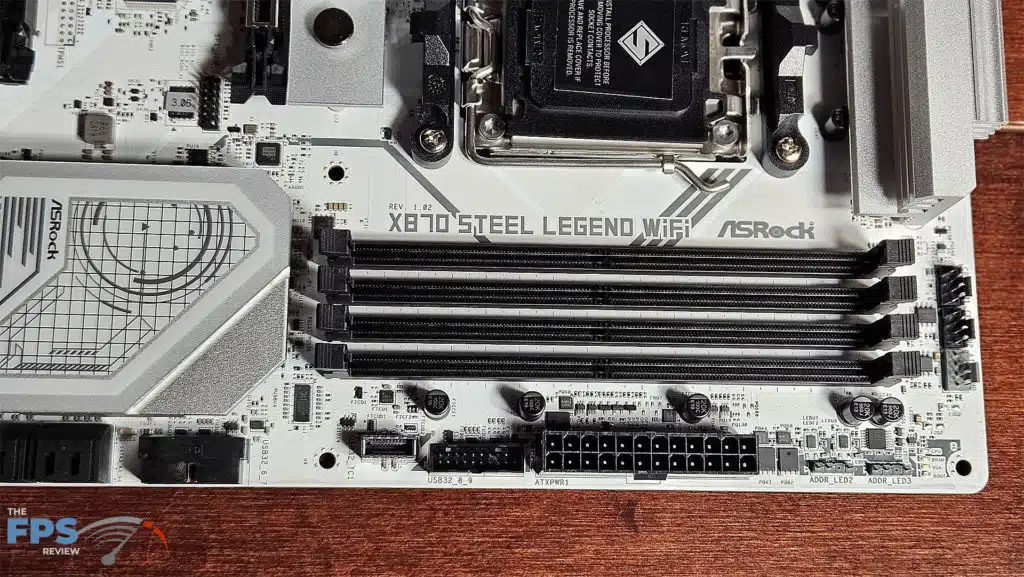
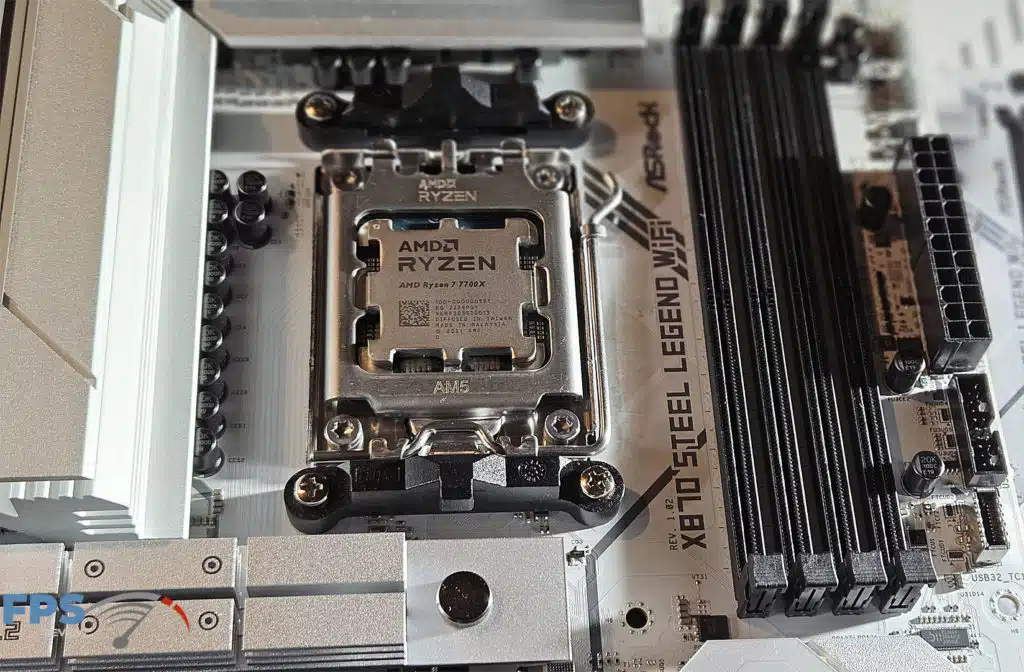
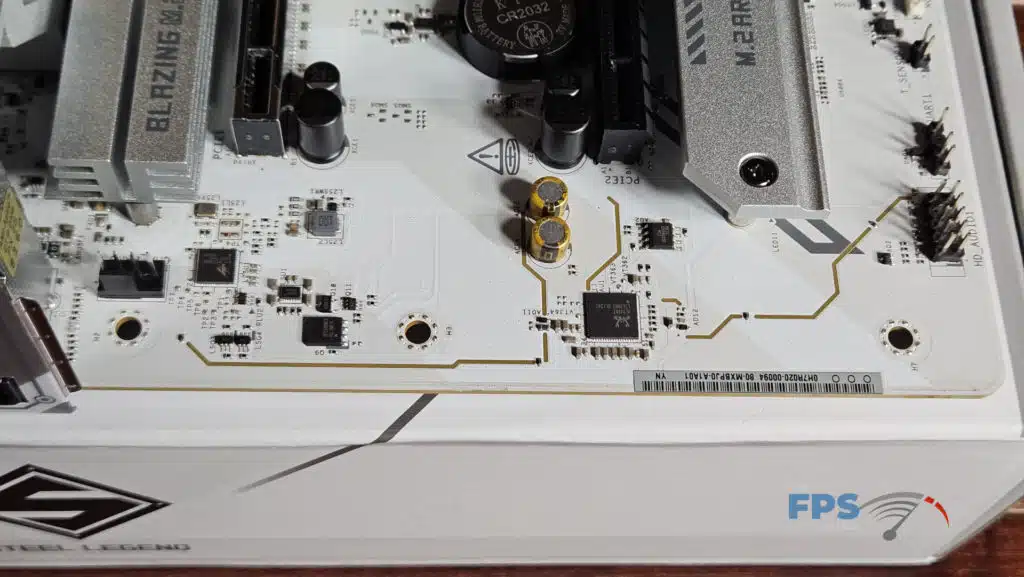
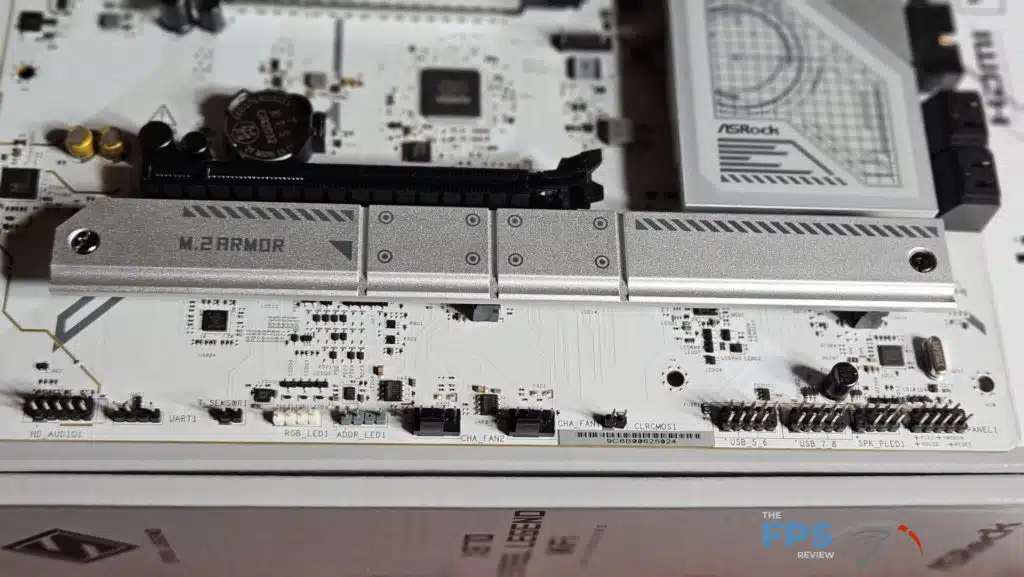
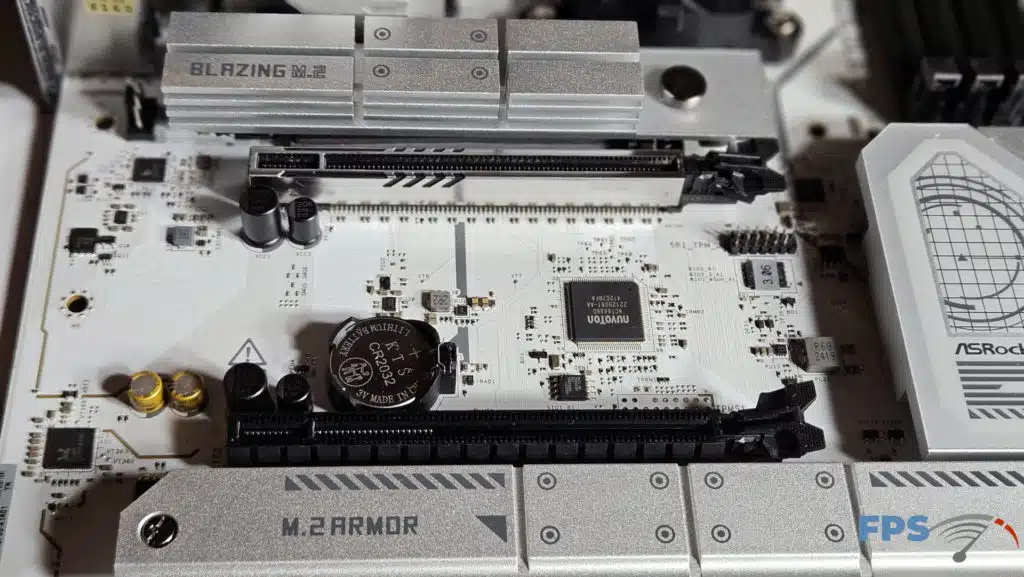
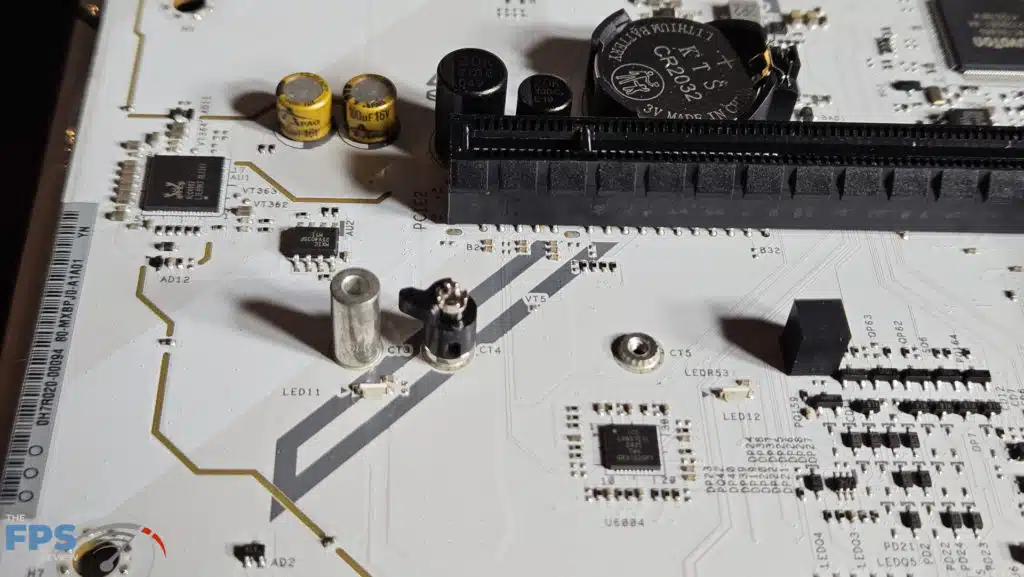
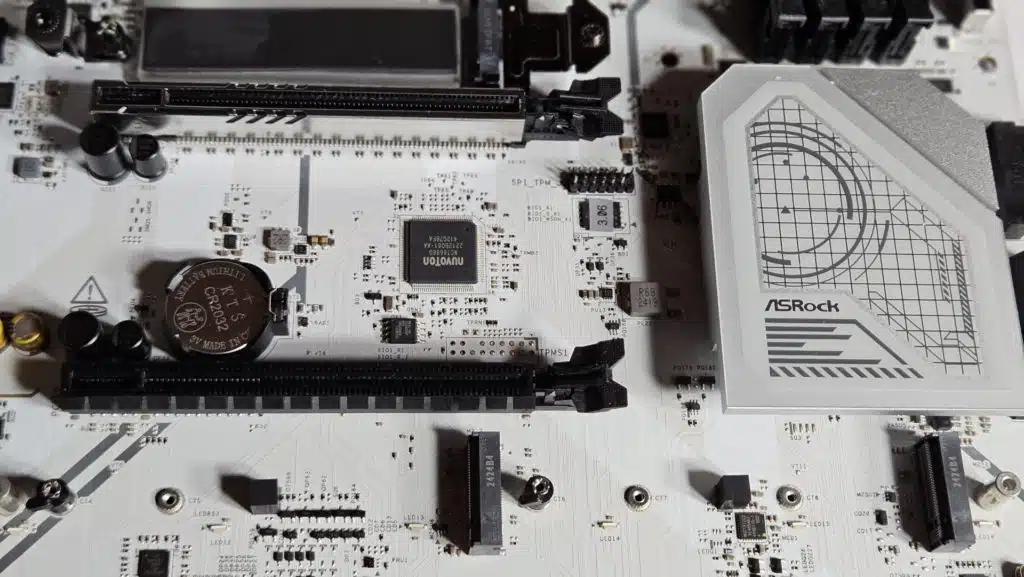
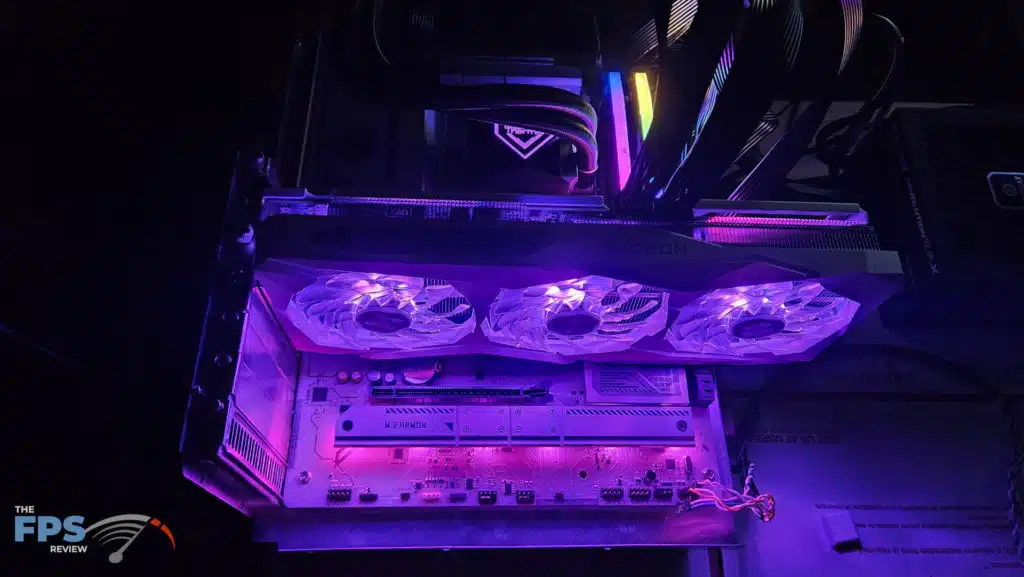

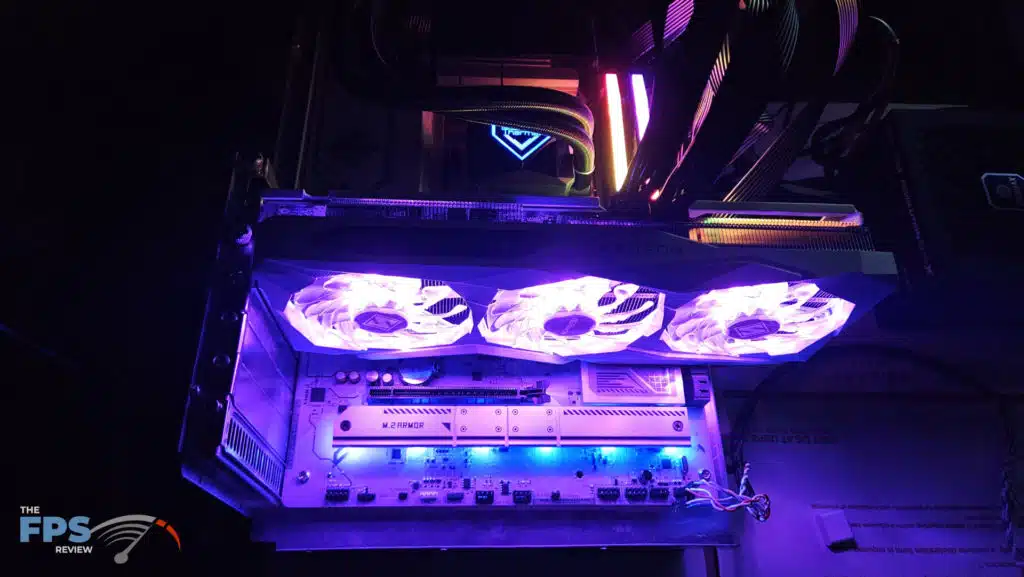
UEFI
Our ASRock X870 Steel Legend WiFi uses a standard UEFI BIOS, an American Megatrend AMI UEFI. UEFI is easily entered from the logo screen and presents you with the main screen. The BIOS enters the main screen for the Advanced Mode. There is an “Easy Mode” and an “Advanced Mode” as you will see in the screenshots.
Easy mode is a single screen and can be used to select profiles for your RAM as well as Boot order if you need that. Advanced mode has all the remainder of typical BIOS selections such as manual overclocking, Performance Boost Overdrive, onboard devices, fan adjustments and controls, monitoring, and BIOS Flashing.
Since this is an X870 model the selections are slimmer than you would see on the top-shelf X870E models. However, one can still manually adjust plenty of options for the CPU and RAM. We were issued the release BIOS with our motherboard, 3.08.AS01 with SMBIOS version 3.4, dated 9/11/2024. There are no updates yet so we cannot comment on the ASRock “Instant Flash” procedure. However, it appears to be identical to other manufacturers flashing from a USB Drive.
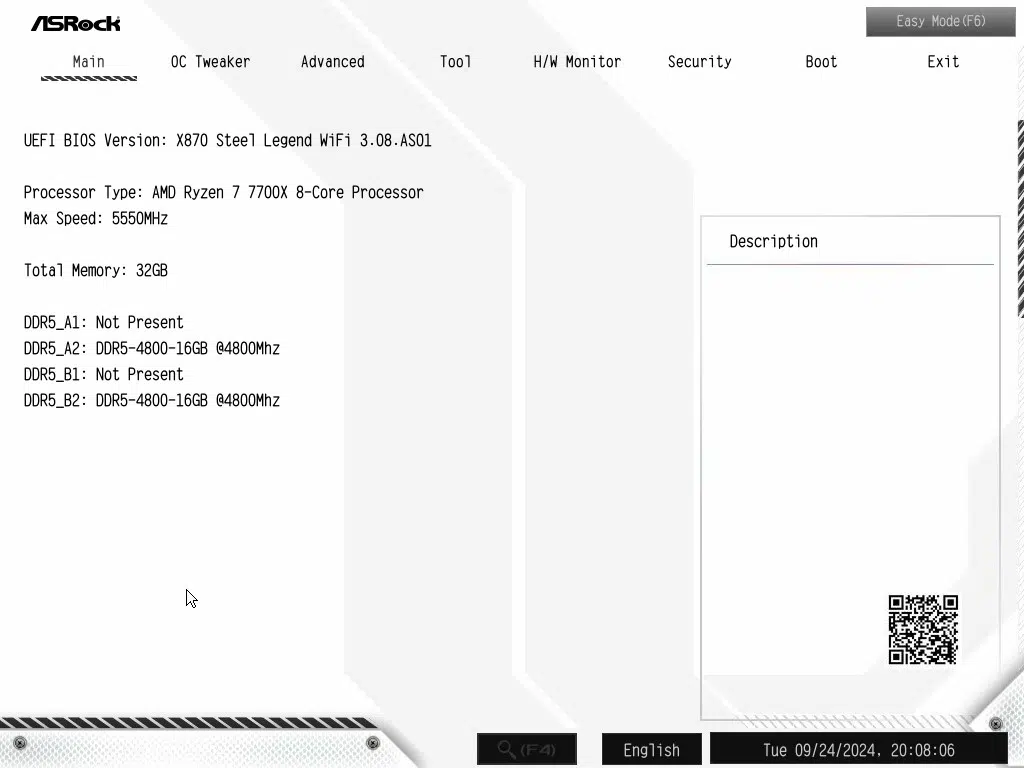
We found working within the UEFI, was well organized. Navigation was very straightforward. The main sections were all well labeled and submenus were categorized to be easy to find. The layout was very smooth to navigate and selections could mostly be made with a mouse click.
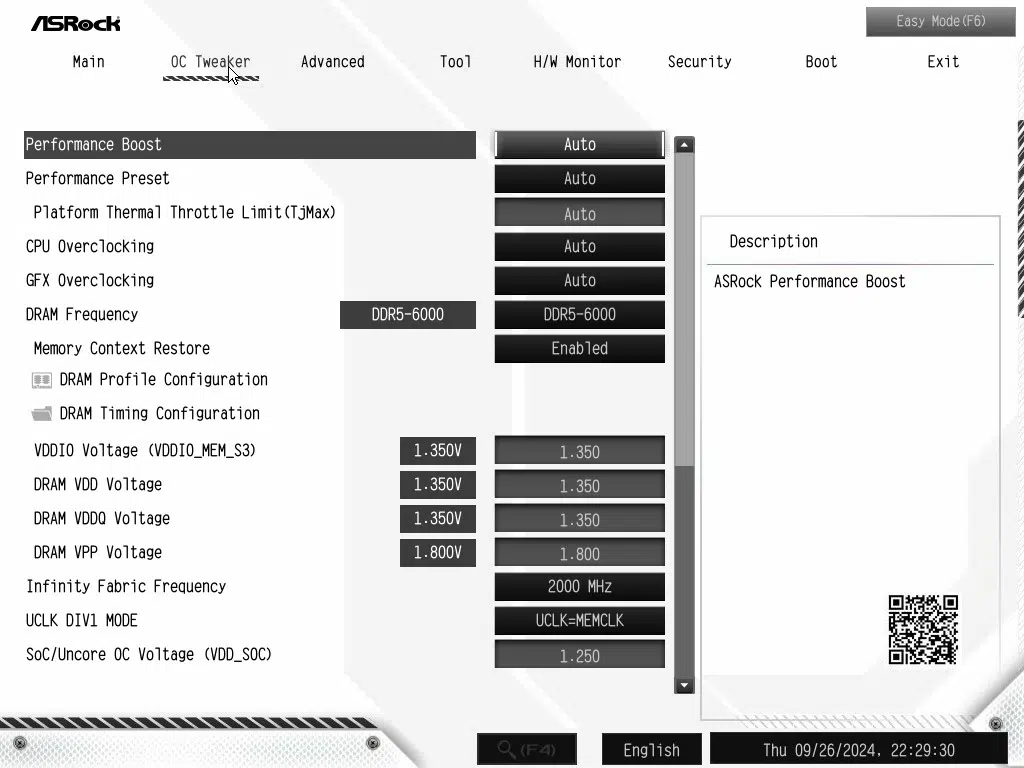
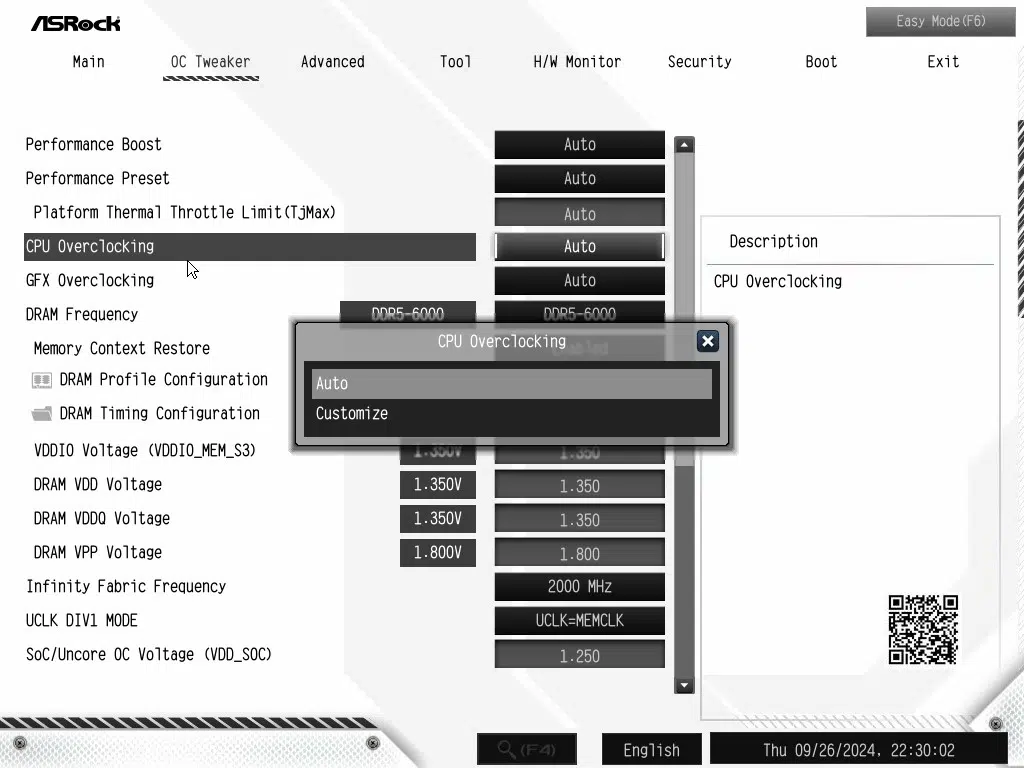
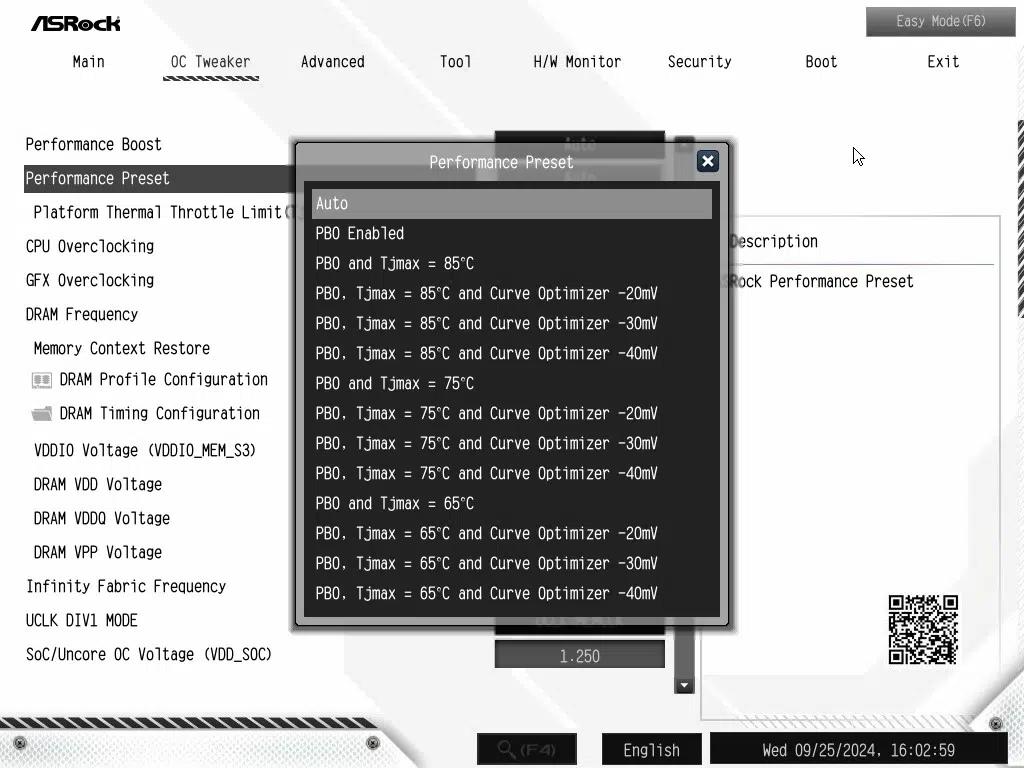
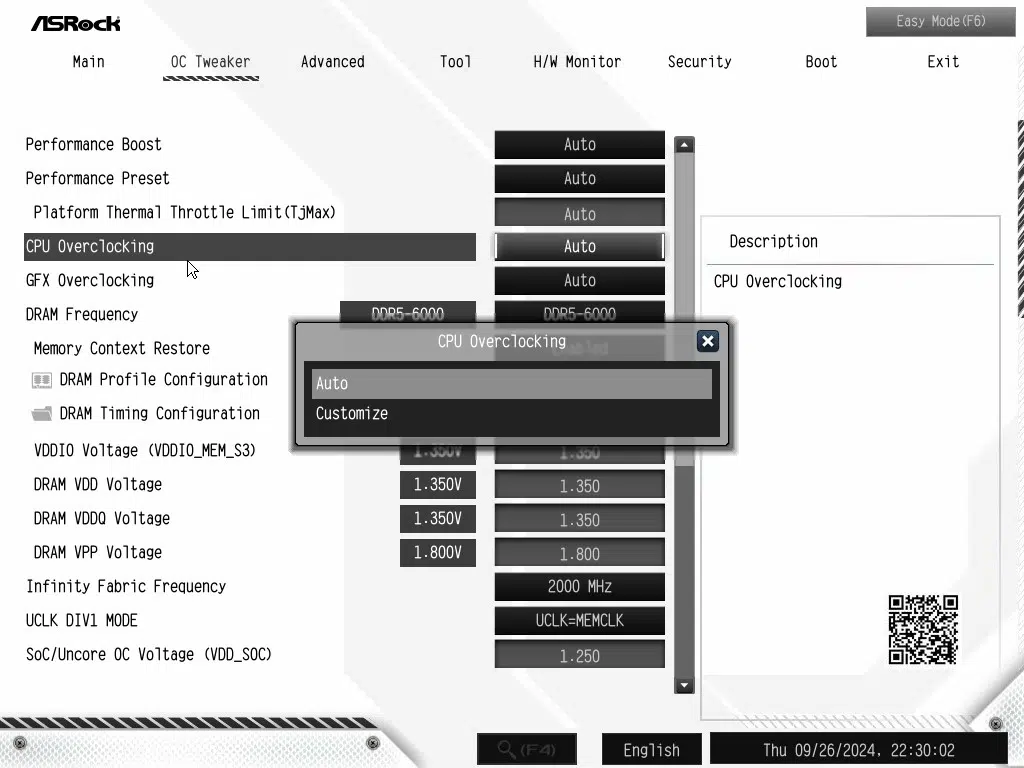
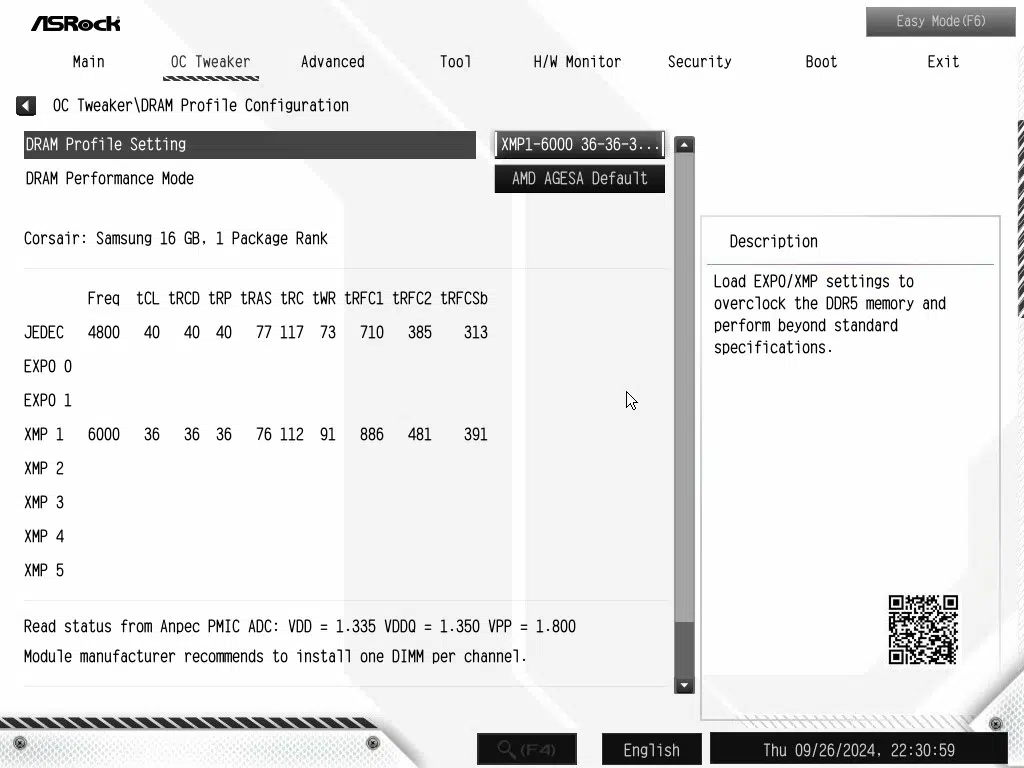
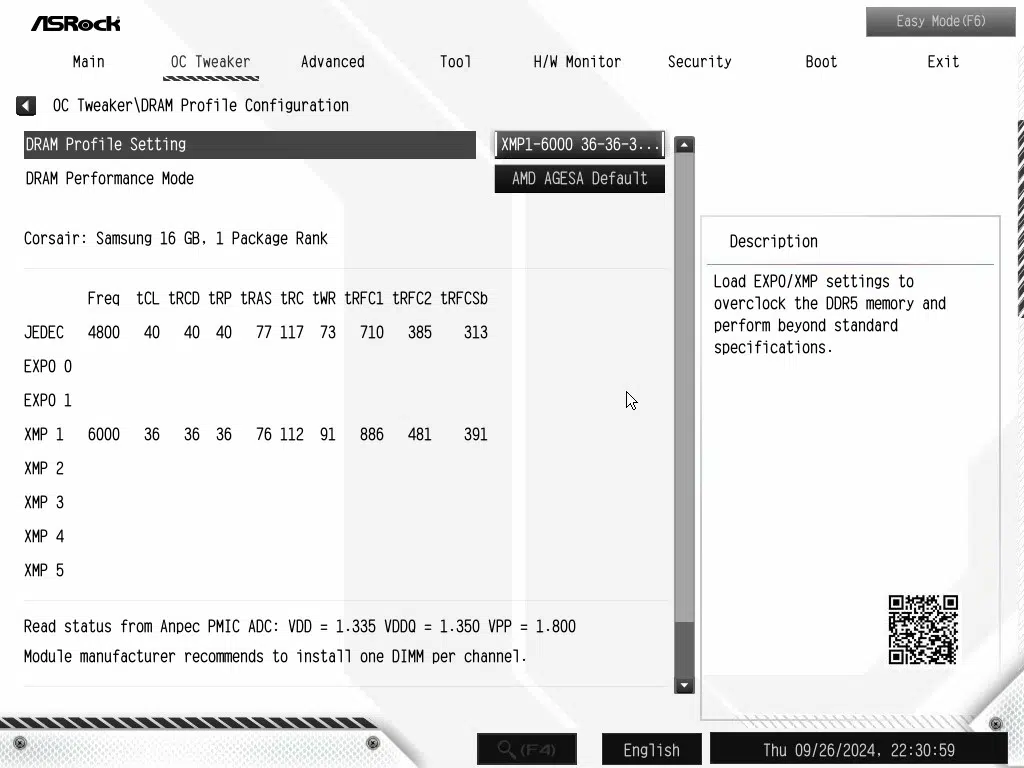
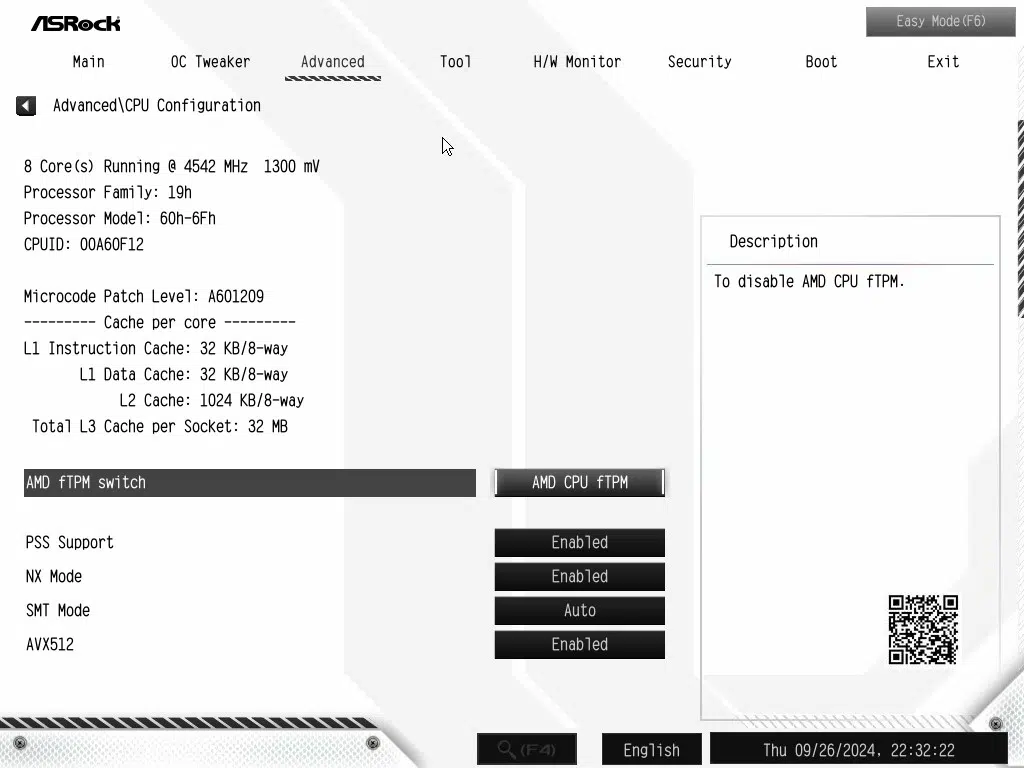
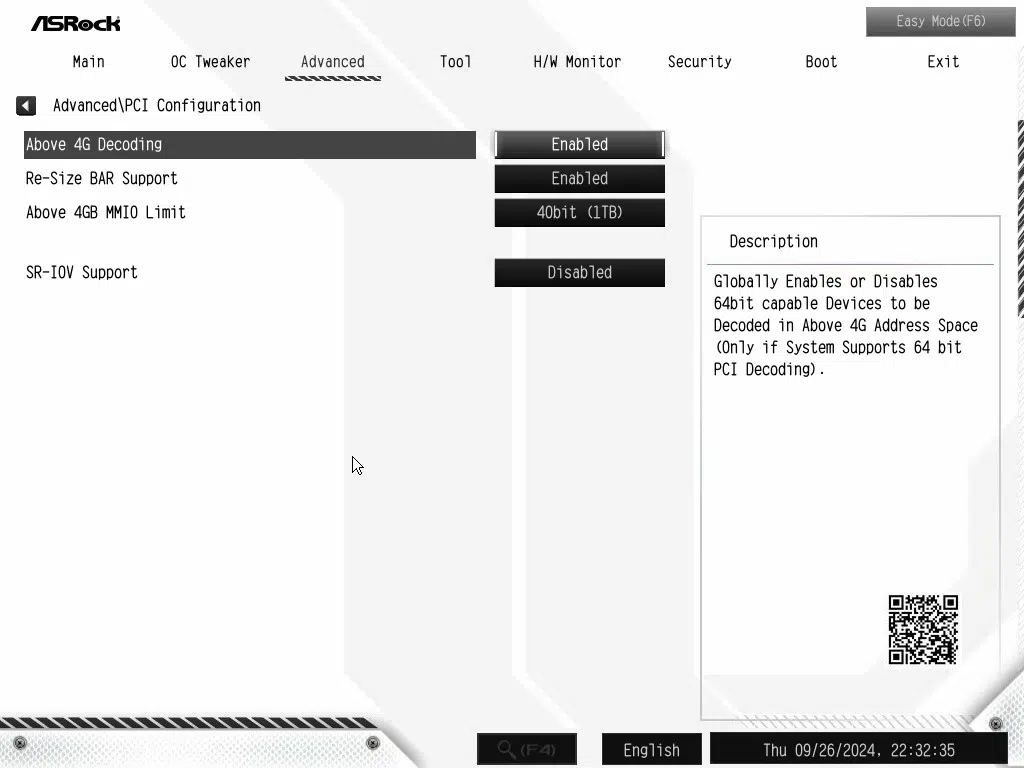
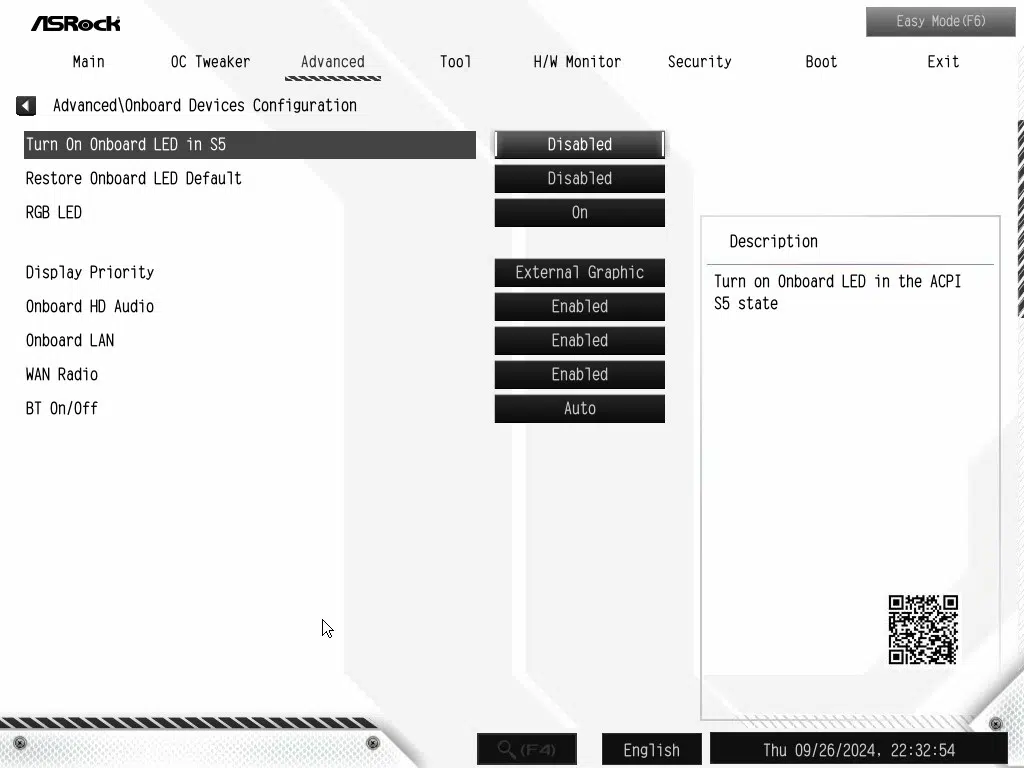
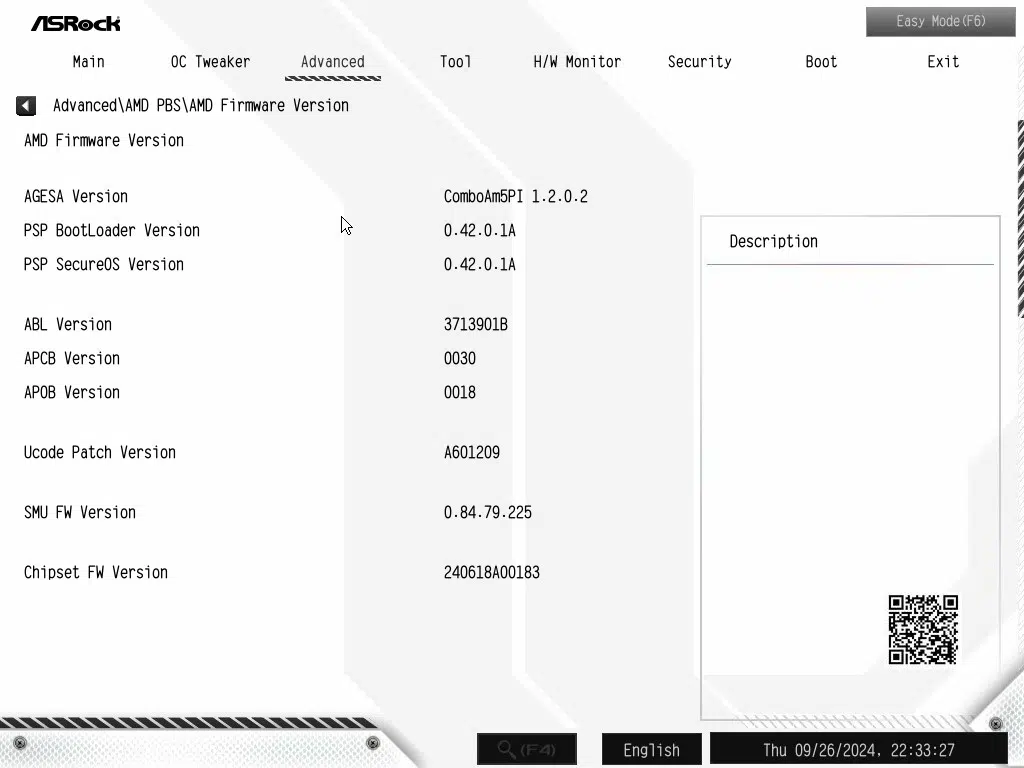
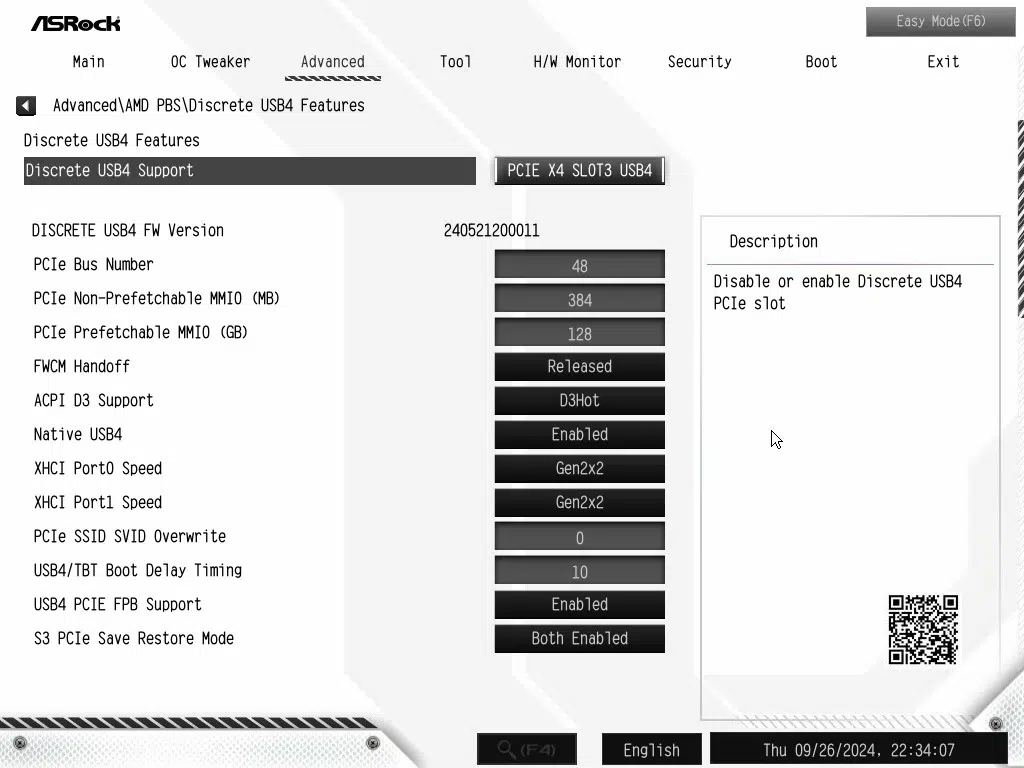
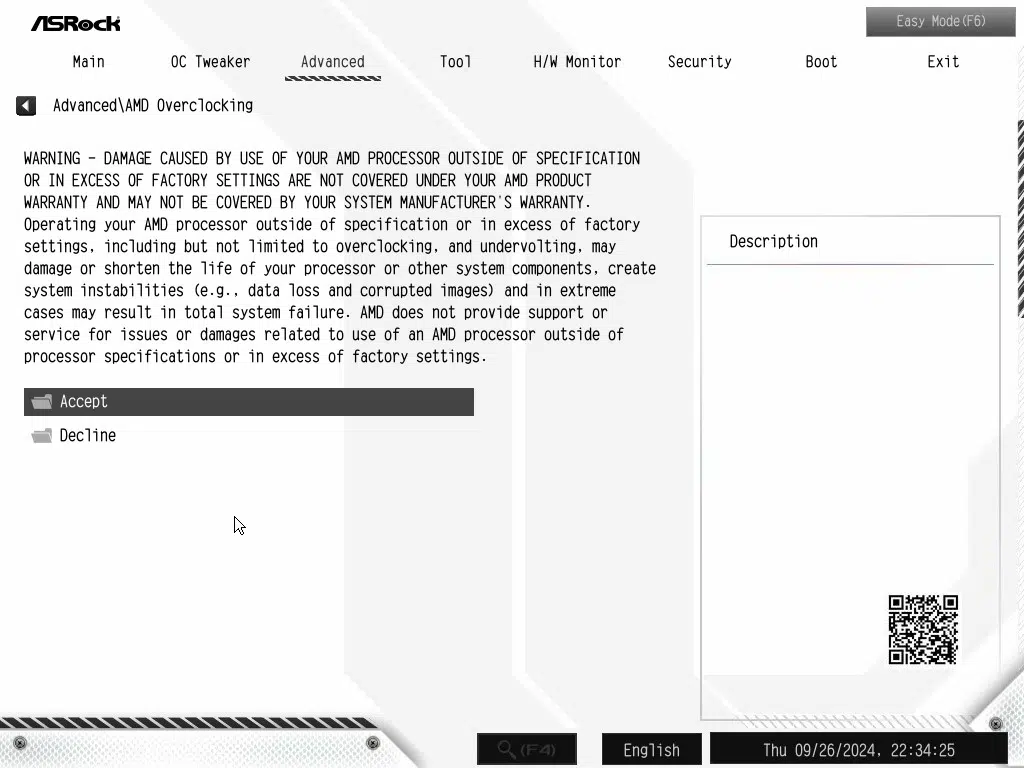
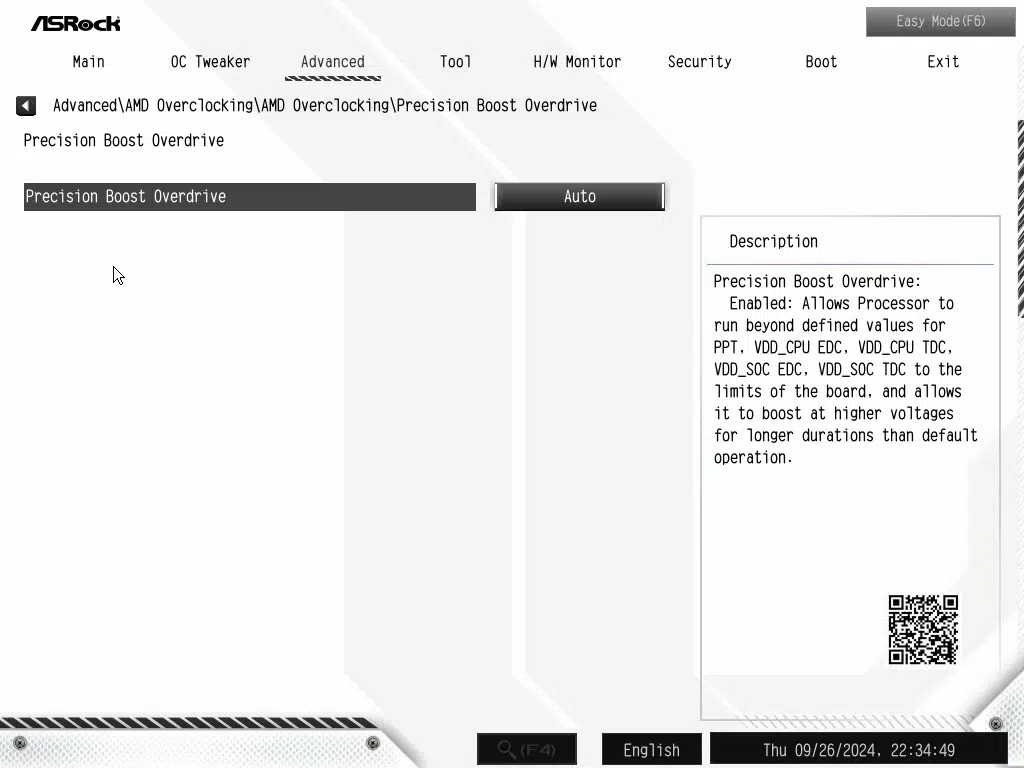
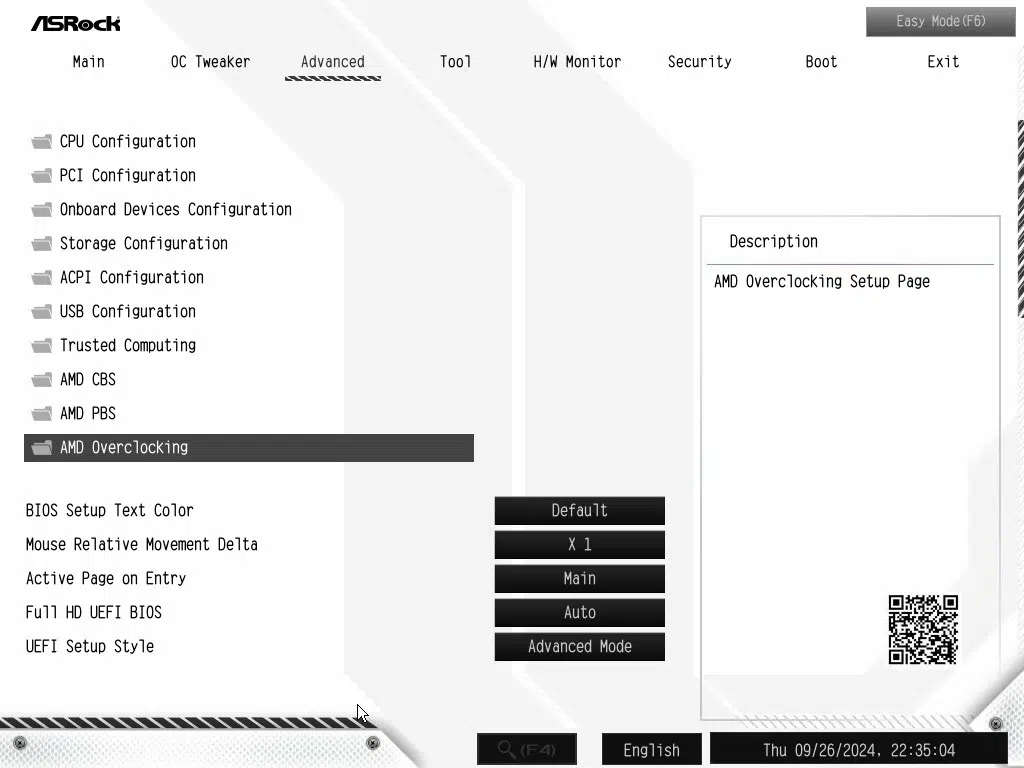
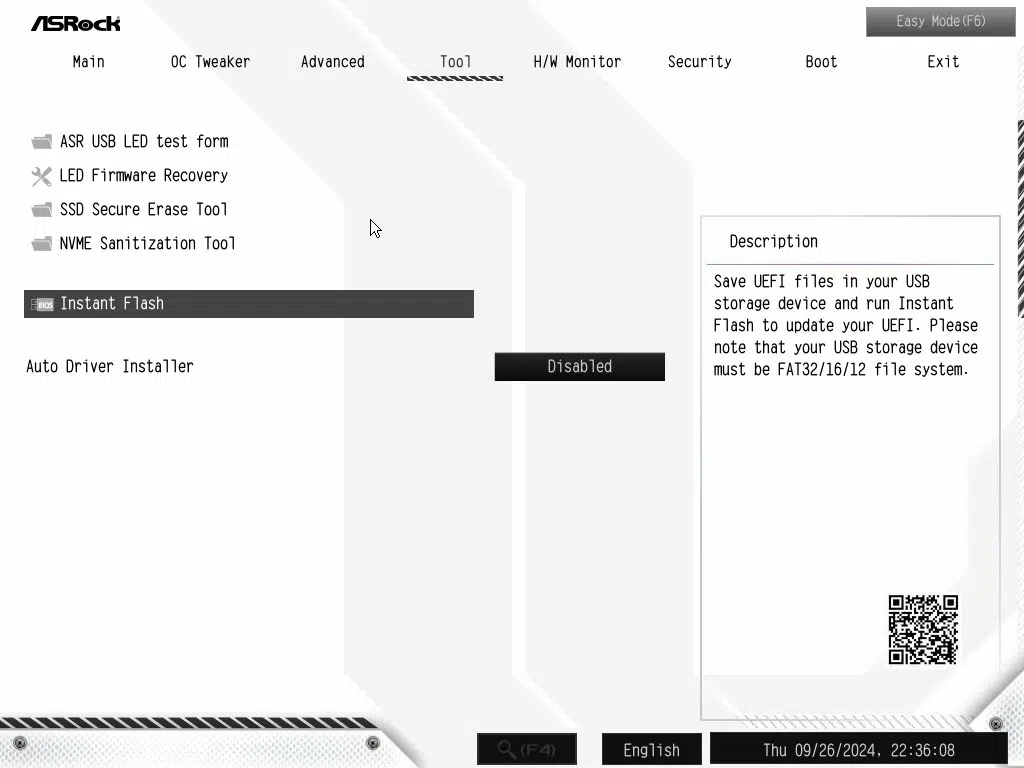
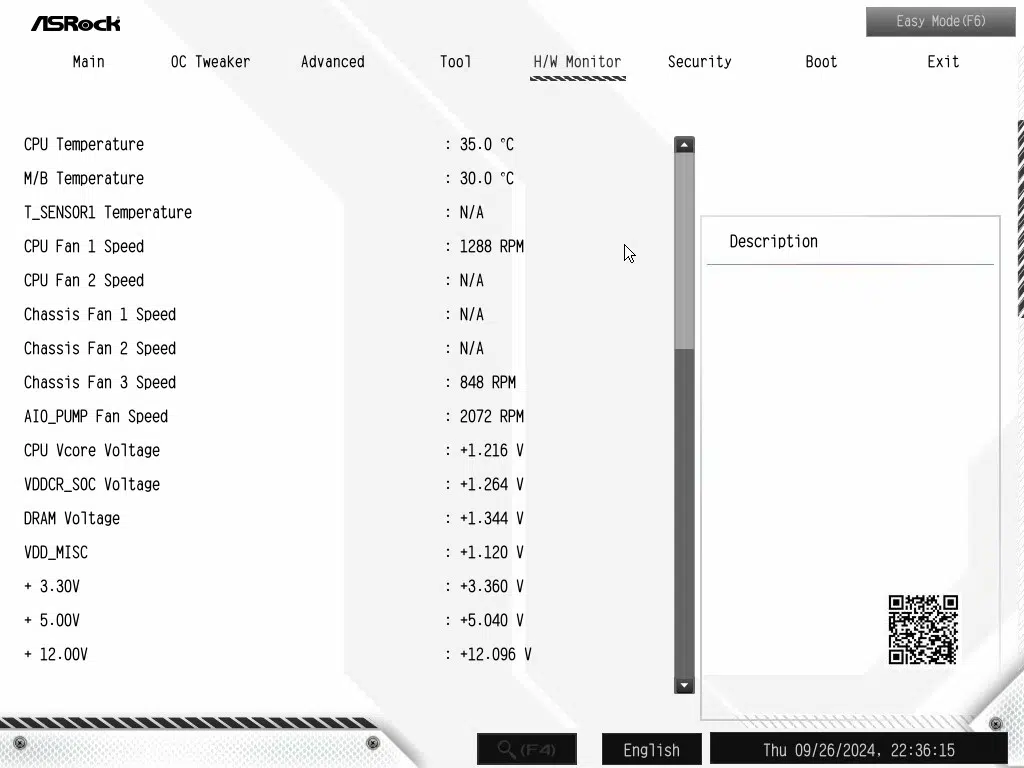
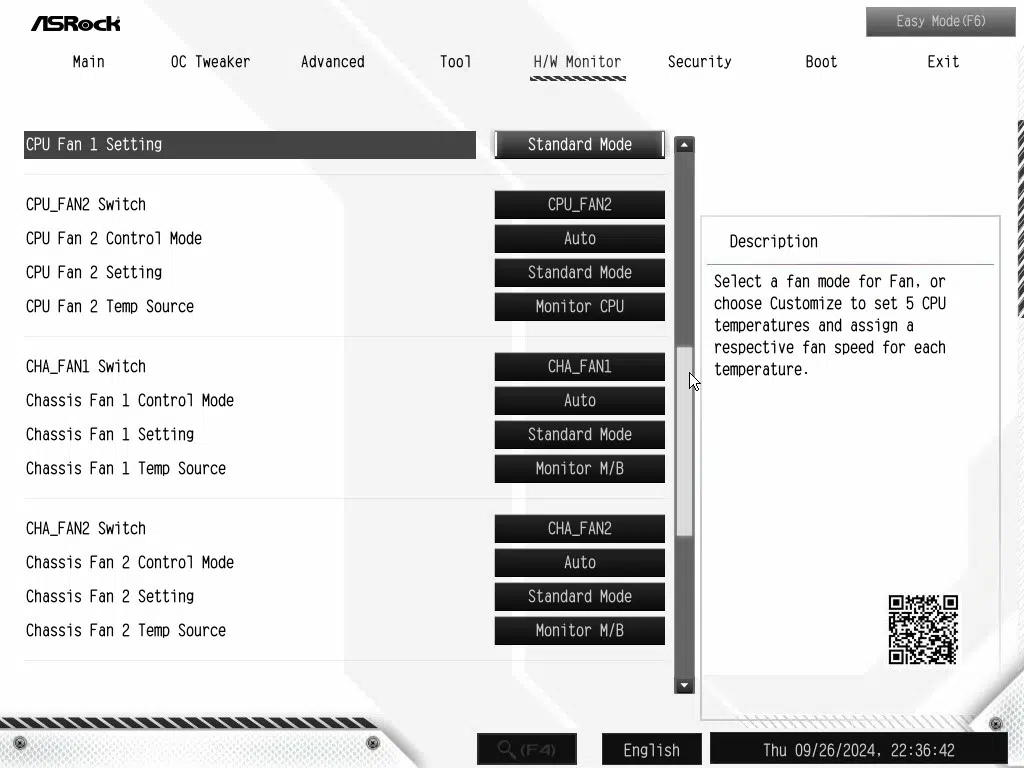
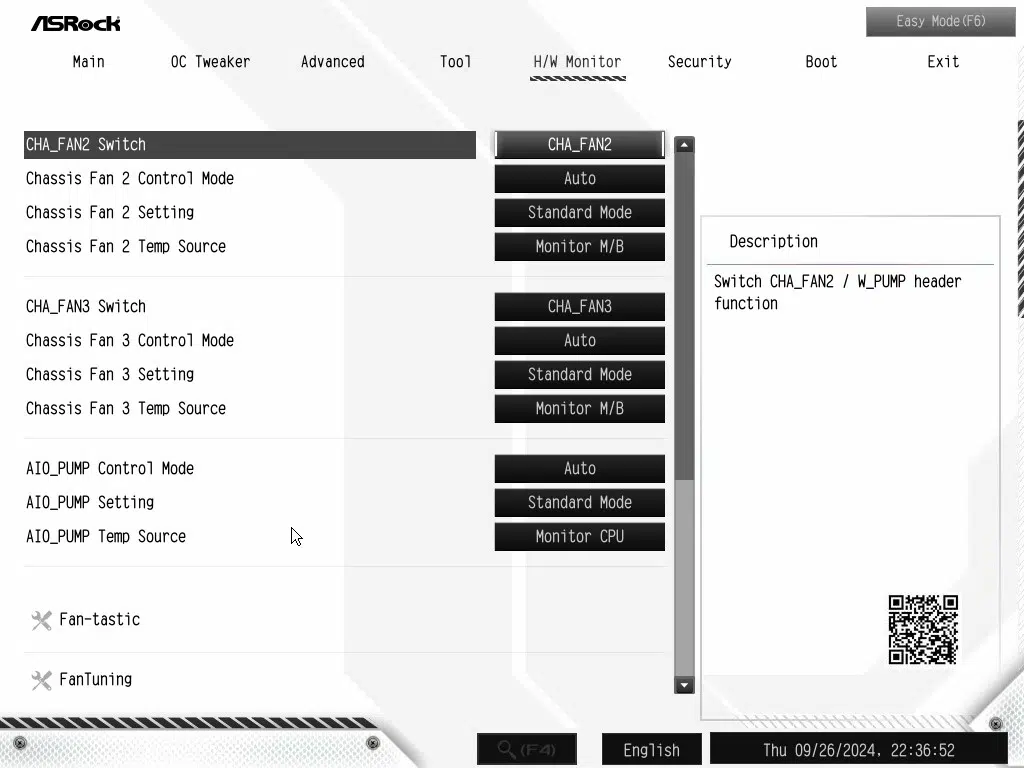
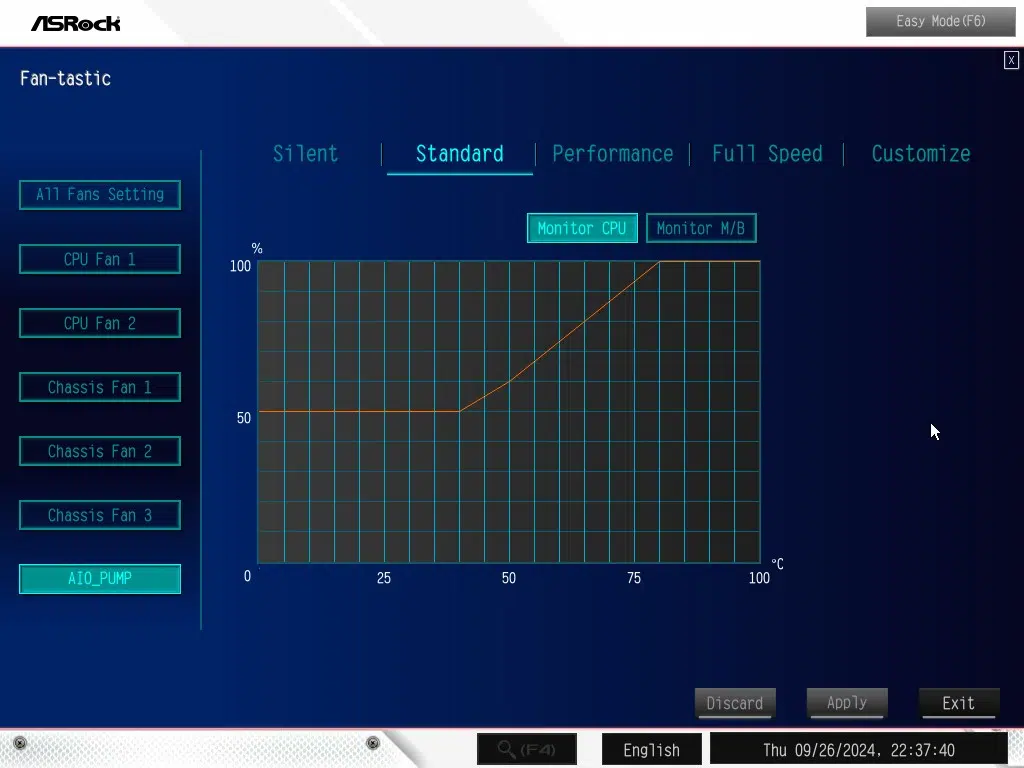
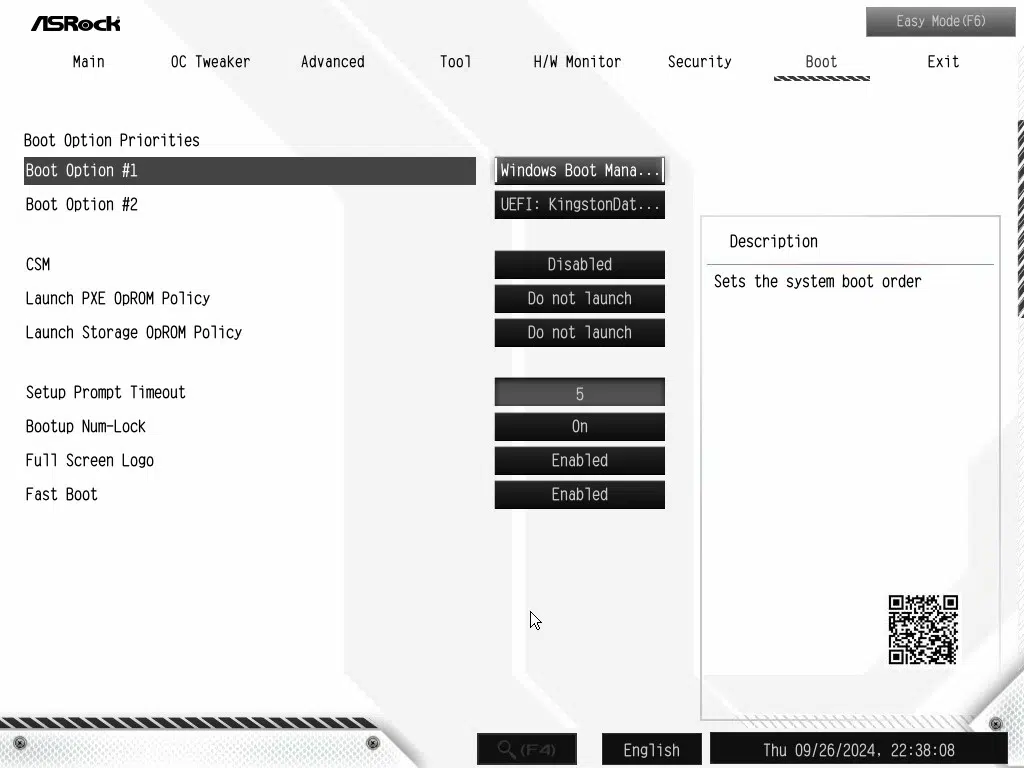
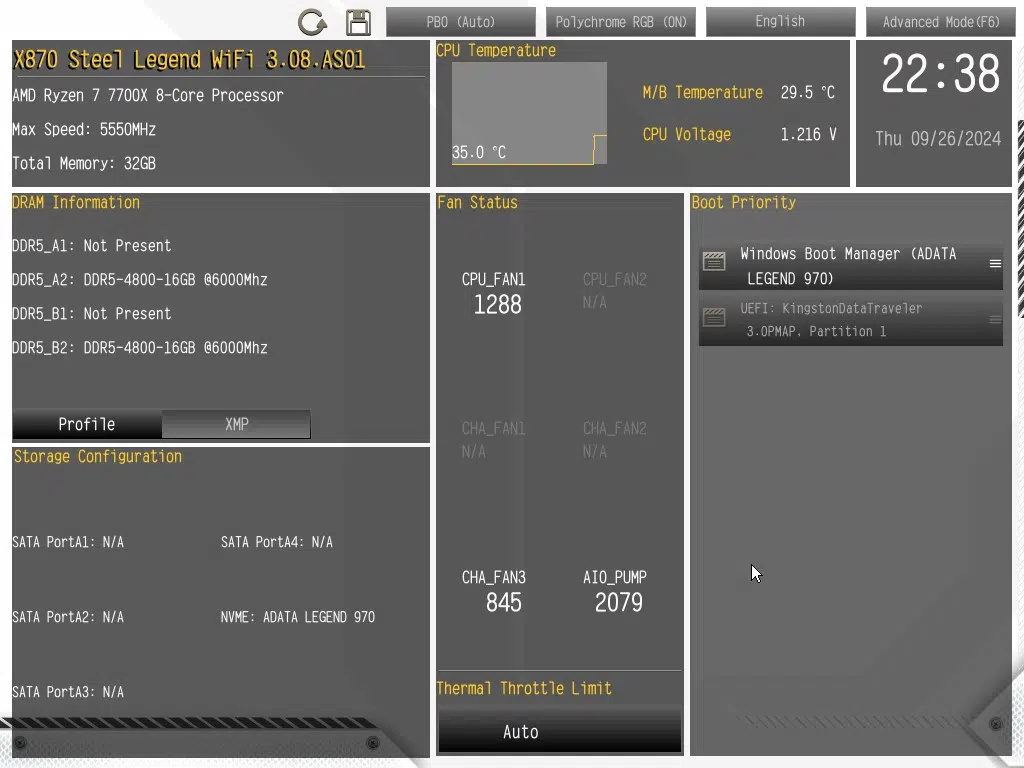
Subsystem and CPU testing
Just a brief word about testing the ASRock X870 Steel Legend WiFi motherboard. As this is my inaugural review of a motherboard, I was searching for a way to validate my testing. Also as this is the release of the X870E and X870 we had no comparisons apples to apples. In the testing, we used the reviews of the ASRock X670E PG Lightning Motherboard and the AMD Ryzen 7 7700X CPU to do this.
M.2 Performance
In this section we tested a single Gen5 drive, the ADATA Legend 970, using CrystalDiskMark. We started using the primary slot and then each subsequent slot. For comparison sake, we will reference our review of the ASRock X670E PG Lightning motherboard as it uses the same CPU and Gen5 drive. Our results are very similar to what you would expect. The M.2_1 slot was very quick as you would expect giving results nearly identical to the referenced motherboard and very similar to those in our formal review of the drive. The M2._2 and _3 perform much slower as would be expected, and perform nearly identically.
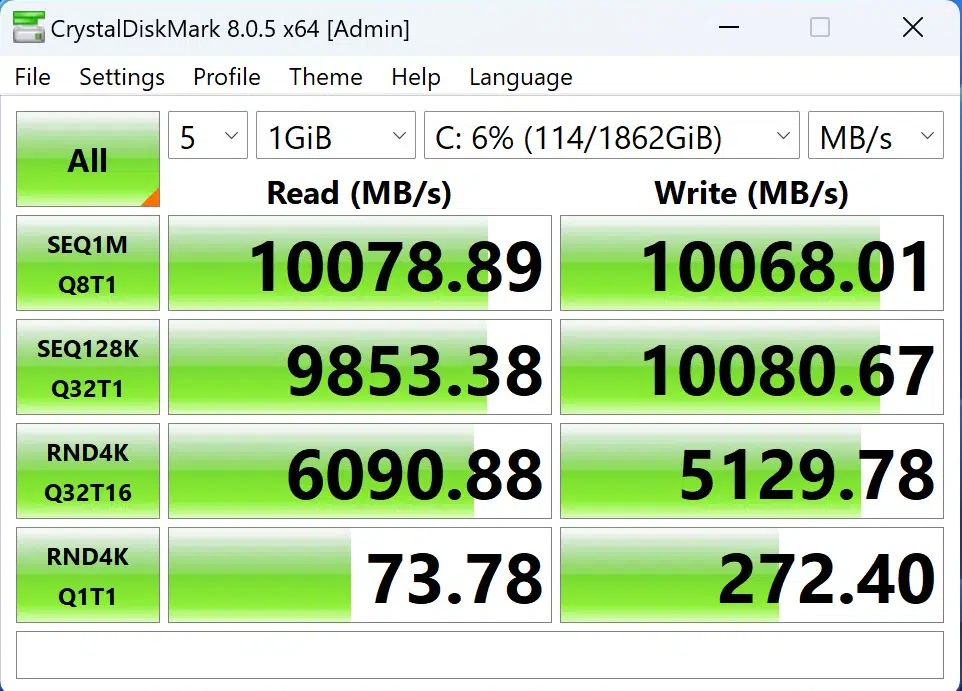

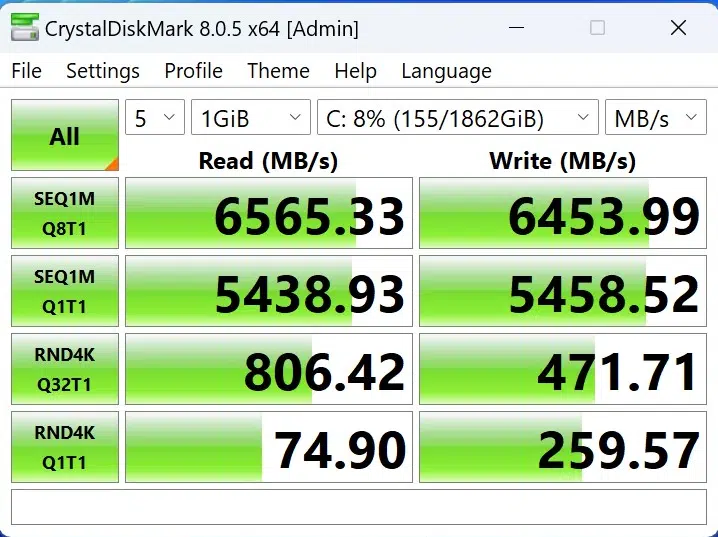
Memory Bandwidth
Our testing uses the AIDA64 Cache and Memory Benchmark. Our board used a pair of 16GB Corsair Vengence DDR5 modules (CMH32GX5M2D6000C36) running at their XMP profile. You can see the result below. The results are in keeping with the comparison motherboard.
PCMark 10
We run the standard PCMark 10 benchmark test here. If you compare our result to the ASRock X670E PG Lightning, it is slightly faster, but within expected limits.

Cinebench R23
The standard Cinebench R23 benchmark was run for 10 minutes in both multi-core and single-core CPU testing. We resulted in 20,155 and 2002 respectively. These results are similar to the referenced motherboard and also our review of the AMD Ryzen 7 7700X.
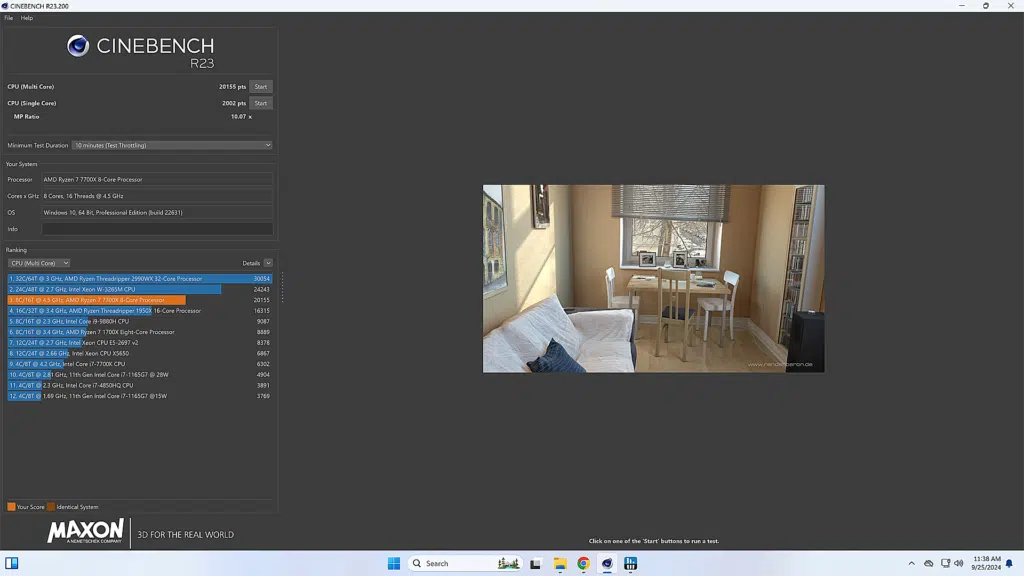
Blender Benchmark
In Blender, our results are monster 126.2, junkshop 89.2, and Classroom 63.5. These are better than the results from testing the ASRock X670E PG Lightning motherboard but on the whole slower than in our review of the AMD Ryzen 7 7700X.
3DMark
In this benchmark, we run both the CPU Profile and TimeSpy. Max threads resulted in 9105 and the TimeSpy CPU score was 13,450. The results are nearly identical to the ASRock X670E PG Lightning.
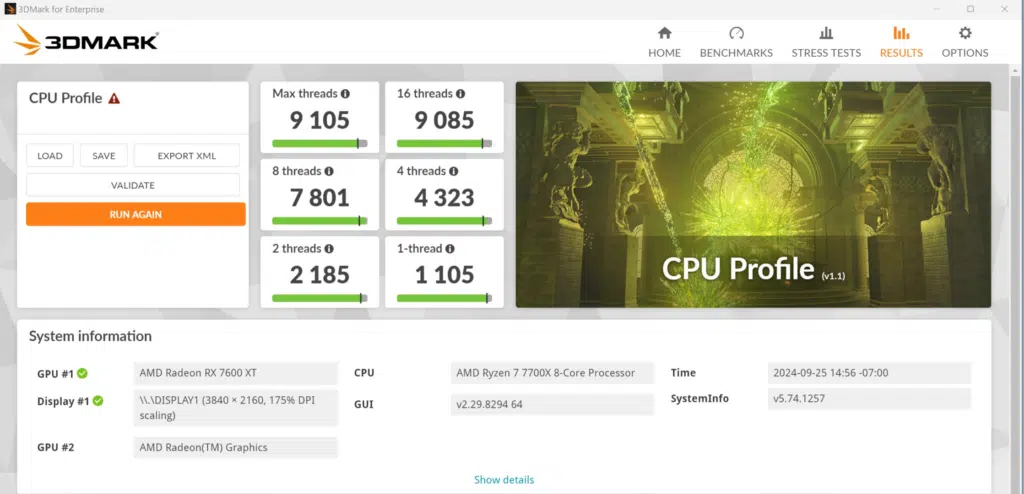
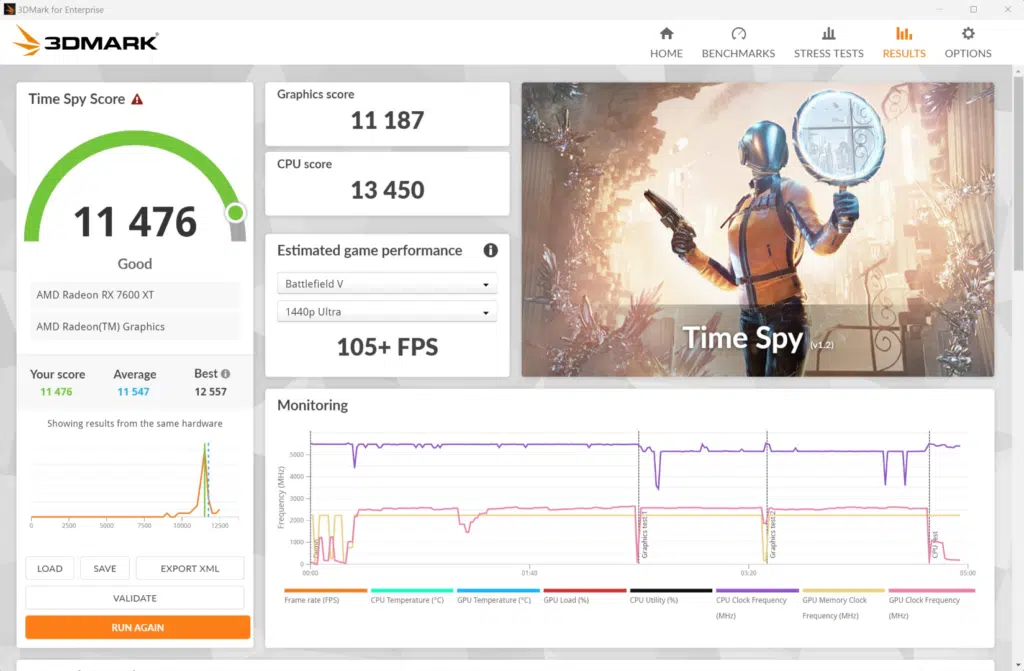
V-Ray Benchmark
We ran the CPU-only benchmark in V-Ray. Our score of 21,521 was quite good in comparison to our other reviews.
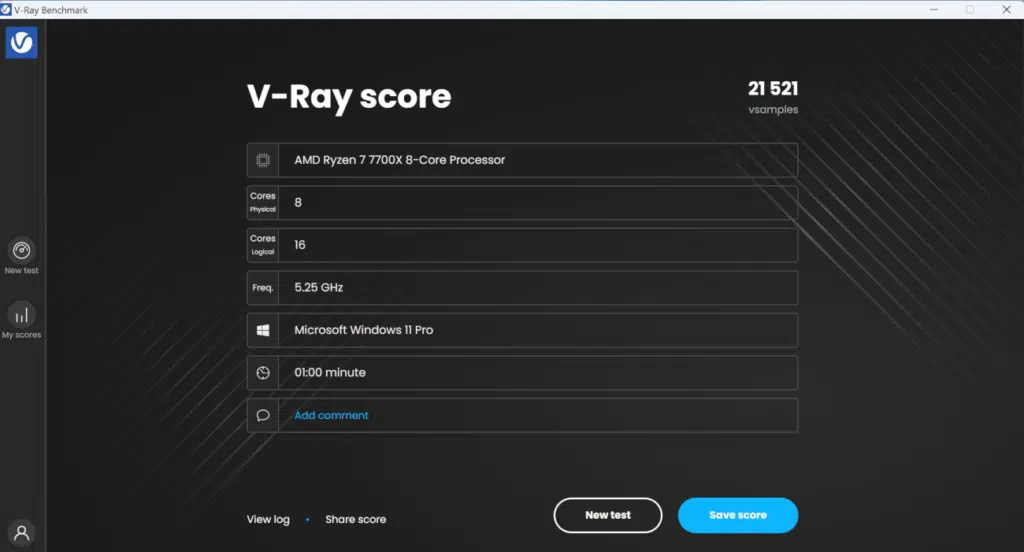
VRM Temperatures
Here we will measure the VRM temperatures via HWInfo64 while running Cinebence R23 benchmark for 20 minutes.
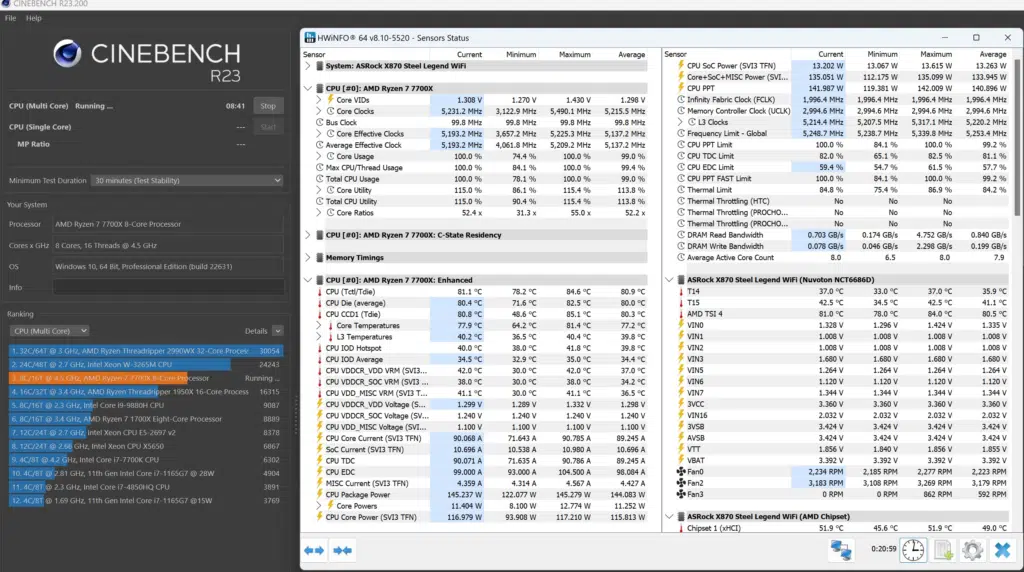
Here you can see the CPU was under 100% load and reached 80C. Meanwhile, the VRM temperatures were between 38 and 42C. This benchmark ran without a hiccup. In the lower screen capture, we placed a 120mm fan at 820RPM moving across the upper section of the motherboard from left to right, you can see this lowered the VRM temperatures by 2 to 4 degrees C.
Conclusion
In this review, we had the opportunity to evaluate, the ASRock X870 Steel Legend WiFi motherboard. This full-sized ATX motherboard is based on the AMD AM5 socket and will support AMD Ryzen7000 and 9000 series CPUs in addition to DDR5 memory up to 8000 MT/s. The motherboard supports Gen5x16 PCIe, Gen5 SSD, USB4, and WiFi7. The unique white, black, and silver design set the board apart. Although this motherboard is somewhat scaled-down compared to its X807E counterparts, it has all the features you need and none that you don’t. It is priced right as well at $259.
Installation and Use
Overall the ASRock X870 Steel Legend WiFi motherboard was a pleasure to work with. Components were easily installed without interference. There is ample room at the CPU socket. The RAM slots are the old-school latch on each end but spaced so as to not be a concern with large coolers. Our “Blazing” M.2 slot had an EZ release latch while the M.2_2 and _3 will need a Phillips screwdriver. The GPU primary is reinforced but uses the standard latch. There is no EZ release for the GPU.
What may be the issues with mounting devices we touched on in the introduction? Our SSD had its own active heatsink and was hindered a bit by the slot’s lower thermal pad. We couldn’t get the small plastic M.2 hold-down latch to catch necessitating a rather lengthy search for a spare M.2 screw. We also noticed that the “Blazing” heatsink top, if used, is extremely close to the primary GPU latch. This may cause even the most patient individual to lose their religion trying to release the GPU. We found that it was easier to first remove the M.2 heatsink top and then go after the GPU latch.
Working with the ASRock X870 Steel Legend WiFi motherboard otherwise went about as well as you can ask for. The first boot was quick and entering the UEFI/BIOS likewise. Navigation of the BIOS was likewise very straightforward. The BIOS is very intuitive. Finding items in the submenus is simple. This BIOS is not as expansive as the upper tier boards but has everything you would expect from this price point. Windows loaded up with no issues. The motherboard never faulted in any of our testing. Since this was a pre-release sampling, we had only one BIOS version which was already loaded into the BIOS chip, therefore we did not use the BIOS update flashing software.
Final Points
This review of the ASRock X870 Steel Legend WiFi motherboard encompasses a good look at the “plain” X870 chipset motherboard offering from ASRock. We found this board to be very easy to use and it simply did its job. The Steel Legend represents the lower-end price point but is a distinctly designed white and black aesthetic.
ASRock also stayed with an 8-layer PCB design, not sacrificing on quality, which is great to see at this price point. There may not be all the fancy EZ release features, but the board has everything you would need to build a solid PC. Performance was excellent across the board. Our AMD Ryzen 7 7700X showed results comparable to our other reviews and running our Corsair Vengence at full XMP took nothing more than the click in the BIOS. For $259 this board represents a solid X870 motherboard choice.




